
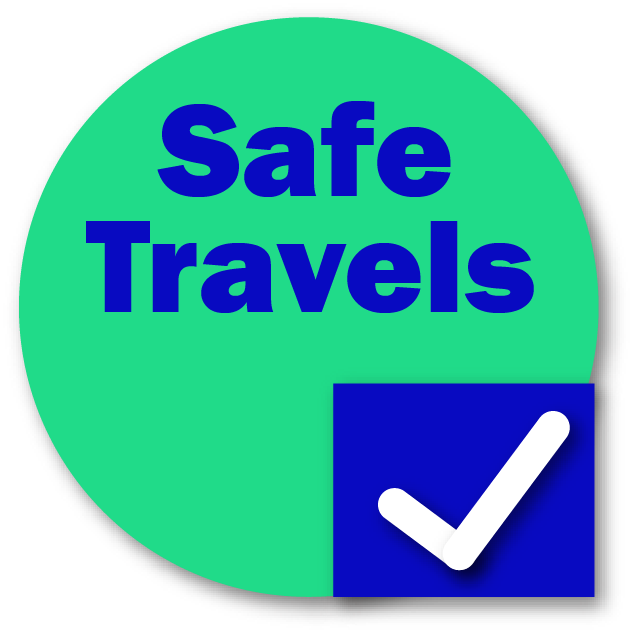

 Wildlife & Nature
Wildlife & Nature




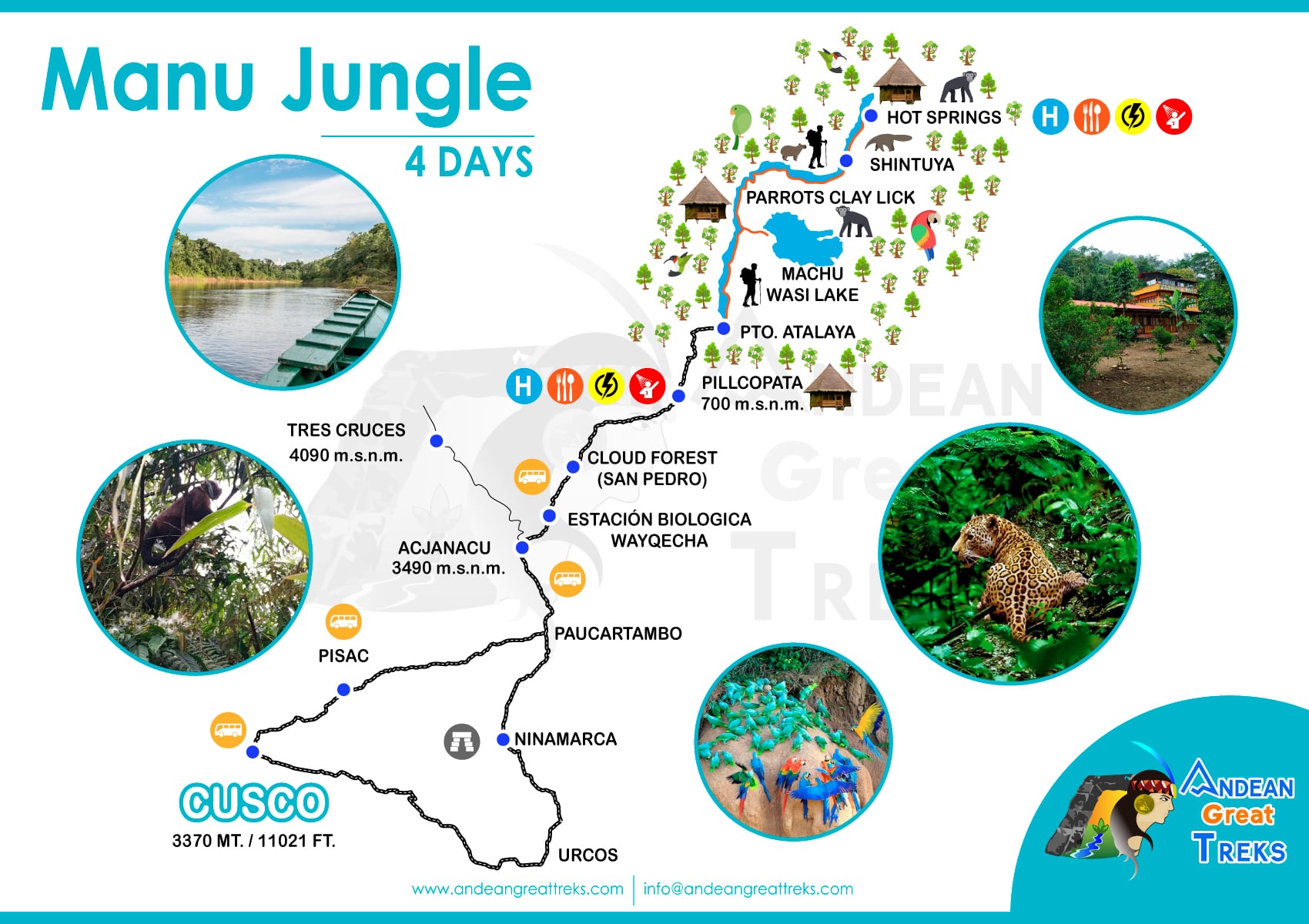 trip overview
included
Trip Highlights
activities
accommodations
itinerary
packing list
faq
essential trip information
best season to travel
price & availability
reviews
Reserve Online
trip overview
included
Trip Highlights
activities
accommodations
itinerary
packing list
faq
essential trip information
best season to travel
price & availability
reviews
Reserve Online
 CREATING AUTHENTIC TOURS IN PERU
CREATING AUTHENTIC TOURS IN PERU

Discover the treasures of the Manu Amazon Rainforest Tours in Peru 4 days, exploring the amazing Manu National Park. The Manu Biosphere Reserve is home to 1,025 species of birds, around 10% of the world’s bird species; 221 species of mammals (5% of the world total); more than 1,300 species of butterflies (15% of the total of the globe), 136 of dragonflies, 650 of coleopterans and more than 300 species of ants; 210 species of fish in rivers and lakes, 155 amphibians, 132 reptiles; species that were recorded by the different expeditions of naturalists, becoming the most biodiverse protected area in the world with respect to these animals.
Immerse yourself in the strange world of colors, sounds and smells of the Manu National Park and let yourself be carried away by deep relaxation in this dreamy idyll. This tour takes you amid the nature of a unique biotope with its lush mountain cloud forests on the eastern slopes of the Andes and the fertile rainforests of the Amazon rainforest, where the flora and fauna are more diverse than anywhere else. Place of the world. Manu National Park in Peru is a heaven for wildlife viewing and offers many opportunities to explore different species of plants.
This trip is rated as easy. Participants should enjoy short walks on trails full of moisture, mud and heat, in the wild jungles of South America. In many of the circuits that our guides will take you are close to the lodge, there will be days when we will have to do our walks with some rain. Weather conditions and remote locations are a combined physical stress that can make this activity a bit more challenging than it normally would be.
Be prepared to face large rivers, in small motorboats, and taste unique food from the region. Usually you do not need to be a tourist with experience in hiking, since the attraction is approximately 500 meters above sea level. The terrain is not very steep. The probability of seeing wildlife is very varied, since there are days when we will have more chances, than others; Remember that this tour goes to a wild place where animals are not in the same location. The best recommendation is to have a lot of patience and teamwork with the route guide.
This accommodation has stunning views of the river, surrounded by beautiful gardens, is located in a quiet area, near the main square of Pilcopata. The dining room is shared, if you have any equipment or telephone that you want to connect to the plug to charge it, do not worry, since this lodge has electricity 24 hours a day. There is also a telephone signal, internet only for hours.
This lodge is located in the tropical jungle on the shores of Alto Madre de Dios in the protected area of the Manu Biosphere Reserve. Built in the style of the local Machiguenga tribe, the property offers 10 bungalows with private bathrooms. There is a separate dining room and relaxation area with tables and sofas, as well as a covered area with hammocks, where you can relax after a busy day. Meals are taken in the common dining room. (there is no electricity).
This day the pick-up will be from your hotel of Cusco, at 6:00 am, and then we will go in our tourist transport, the trip is by paved road, where you can observe the beautiful landscapes of the Andes. From Peru, the first stop will be after 2 hours at the archaeological site of Ninamarca, which was a pre-Inca funerary complex of great importance. Then we head to the colonial town of Paucartambo, where you can walk through its streets, and if you wish you can also have a coffee. At 10:00 am we leave in the direction of the Acjanacu cloud forest; There after a short explanation we will begin the bird watching activity, during the afternoon the path is all descent to the Amazon forest in the car, there will be certain parts where we walk short stretches with our guide, with the help of the telescope and the binoculars you will be able to observe some typical birds such as the golden-headed quetzal, toucanets, cock-of-the-rock, and different types of tanagers. Our box lunch will be in the middle of the route, then we will have two more hours of descent, appreciating the beautiful landscape of the Amazon forest, in the last part we will be able to observe some species of monkeys; such as the capuchin monkey, woolly monkey. Finally, after 6 hours of travel, we arrive at the first Lodge where we will spend the night. This day we finish the tour at 5 pm, arriving at our Lodge in the town of Pilcopata (500 masl)
Accommodation: Bambu Lodge
Included Activities:
Meals Included: Lunch, Dinner
After breakfast we will continue by private transportation to the Port of Atalaya, which is located on the banks of the Madre de Dios River (700 m). But first we will visit a Pico de Hoz wildlife conservation center, there you will have the opportunity to observe different species of hummingbirds, monkeys, macaws, and sometimes it is also possible to see the great jungle condor (Sarcoramphus papa). At 9:45 am, we arrive at the Atalaya viewpoint where you can take a nice photo, with the Madre de Dios river in the background. Once at the port we will stock up on some fruits, water, and snacks, our boat staff will be in charge of carrying the luggage, and we must all put on life jackets and boots. We set sail first in the direction of the Koñec canyon, where you will have beautiful views of waterfalls, and then we go down the river to our second lodge. This trip lasts 30 minutes, along the river you will observe an enormous diversity of bird species, such as herons, vultures and cormorants, kingfishers. When you arrive at the lodge you can enjoy the warm climate of the jungle.
At 11 am we will begin the short 1-hour walk in the forest where the guide will point out and explain the interesting diversity of wildlife that surrounds them. Upon your return, our chef will delight you with an exquisite buffet lunch. In the afternoon you visit Lake Machuwasi, here you can take a ride on a handmade raft, at the site you can observe several endemic birds, such as the Hoatzin, it is also possible to see the alligator, monkeys, macaws, etc. Then we return to our lodge, where we will have our dinner. If the weather is good, we can take a night walk to see toads, frogs, tarantulas, and snakes. For this, it is necessary to bring headlamps.
Accommodation: Soga de Oro Lodge
Included Activities:
Meals Included: Breakfast, Lunch, Dinner
Today we will get up very early (5:15 a.m.) to go to the lick of the parrots, by boat it is 15 minutes. If we are very lucky we will have a very beautiful show of the macaws, which have reds, yellows, blues feathers, as well green parrots with turquoise, likewise many parakeets, who descend to the clay cliffs in search of minerals and sulfates very important for their diet of the birds. On our return we will have a delicious breakfast with lots of energy for a 3-hour walk in the forest, to learn about medicinal plants, fruits, this day you will meet the largest tree “the ceiba ” In the afternoon after lunch you participate in a therapy activity with mud, you can also swim in the Madre de Dios river. To end the day we visit a small lake near our lodge, to know the family of capybaras and also nocturnal monkeys. Today we will have our special farewell dinner with all the work staff.
Accommodation: Soga de Oro Lodge
Included Activities:
Meals Included: Breakfast, Lunch, Dinner
Our awake at the lodge is at 5:00 am, to have breakfast and pack all our stuff. Those who wish can also do the shooting activity of the bow and arrow. At 6.45 am we left our boat to the town of Atalaya, where we pick up the private transport to Cusco, this trip will last 7 hours. During the trip you can still see some observation of monkeys and birds if they did not have much luck the first day. Today we will have lunch at the Ajanacu pass at 12.00 pm. After descending to the valley of Challabamba, we pass Huancarani, and finally we reach the City of Cusco at between 4:30 a.m. to 5:30 p.m. The final point will be the Kusipata square, which is very close to the city center.
Included Activities:
Meals Included: Breakfast, lunch
The Amazon Rainforest is close to the equator and the average annual temperature is approx. 26 °C (80° Fahrenheit). Due to the fact that the weather changes very rapidly, it’s crucial to be well prepared for your Amazon tour. A trip to the Amazon rainforest is the trip of a lifetime. It’s the kind of adventure that most people only dream about. The Amazon is known as “the greatest expression of life on Earth”.
 warm jackets
warm jackets
 Hydration bladder
Hydration bladder
 wool socks
wool socks
 camera
camera
 scarf
scarf
 first aid kit
first aid kit
 hiking shoes
hiking shoes
 Dry bags
Dry bags
 Trekking Poles
Trekking Poles
 sun cream
sun cream
 Snack
Snack
 sun hat
sun hat
 bathing suite
bathing suite
 rain coat
rain coat
 Sandals
Sandals
 insect repellent
insect repellent
 Passport
Passport
 Down Jackets
Down Jackets
 toilet paper
toilet paper
 daypack
daypack
 Wool cap
Wool cap
 head lamp
head lamp
 gloves
gloves
 sun glasses
sun glasses
 cap
cap
 extra cash
extra cash
 Trekking pants
Trekking pants
Are you looking for some answers to your questions about Manu Amazon Rainforest Tours? Maybe looking for information regarding our Manu National Park tours, how to prepare for your Amazon trip or if the weather will affect your tour?
Here we will answer the most common questions we have been asked by our visitors. If you don’t find your question answered here please contact us and we will do our best to help you out.
Manu National Park is one of thirteen National Parks in Peru. It is located in Cusco and Madre de Dios, extending from the highlands in Cusco (4000m) to the Amazon floodplain at the mouth of the Manu River (300 m).
The park was established on May 29th, 1973, with an area of 1,532,806 ha. In 2002, the entire lower valley of Manu, which used to have the temporary status of Reserved Zone, was annexed; since then it has an area of 1,692,137 ha. Manu National Park is unique in Peru’s National System for Protected Areas (SINANPE) as being the only National Park which protects an entire watershed. It also includes a complete sample of Andean-Amazonian landscapes of southeastern Peru and a huge number of species of flora and fauna.
This Park is also home to the native people of Matsigenka, as well as other poorly known groups, known as the Mashco-Piro or Nomole, which live in voluntary isolation inside the park.
In 1977, UNESCO declared Manu National Park and adjacent areas as a Biosphere Reserve with an area of 1,881, 200 ha. Ten years later, in recognition of its outstanding natural value, UNESCO added the Park to the list of “World Heritage Site.”
It ranges from 300m at the confluence of the Manu River with the Alto Madre de Dios River, to 3,800 meters at the summit of the mountain Apu Kañahuay. Some researchers believe that in the virgin areas of this reserve is found the Païtiti or the lost city of the Incas.
Inca – colonial. Manu area has a history marked by the arrival of foreign people, since the times of the Incan Empire and since the Inca Pachacutec and Tupac Inca Yupanqui annexed this area to their empire, until the arrival of the Spaniards soon after the invasion of Cusco they founded Paucartambo, where they established farms and parcels and where also the king Carlos III of Spain ordered the construction of a bridge to facilitate trade of local products; and this how this valley began to supply products Cusco as coca, sugar, cotton, pepper, wood and others.
In March 1567, the Spanish Juan Alvarez Maldonado who was charge of the province of Mojos started a journey of 37 days to make the first expedition from Paucartambo to the current location of Pilcopata. In May of the same year, Manuel Escobar mounted a second expedition that followed the course of the Alto Madre de Dios River to the Manu River.
In 1861, Colonel Faustino Maldonado embarked on a new expedition from Paucartambo to the Madre de Dios River. It was after him that 30 years later, the rubber man, Carlos Fitzcarrald baptize the mouth of the Tambopata River to Puerto Maldonado, the actual capital of the department of Madre de Dios.
In the lowland forest, indigenous people were affected by extractive activities in the late nineteenth century, the rubber boom ushered in companies like bold Fitzcarrald, one of the most famous of that time. However, Manu area was partially exploited. Rubber activities ceased in the 20s when the resource, unable to recover to intensive exploitation and competition from the prosperous and less expensive crops in Asia started to decline.
Between 50 and 60, the construction of the final section of the road began the logging of cedar and mahogany and the work in the “haciendas” and then extraction of fine skins (jaguar, ocelot, and Giant otters). More recent are the oil exploration activities. Meanwhile, in the Andean region, agricultural activities were affected by the agrarian reform initiated in 1969.
Since the twentieth century, the religious presence became more significant. In 1902 the Dominicans founded their first mission in Asuncion. In 1908 they installed the second missionary position, San Luis del Manu, at the mouth of the Manu River; after leaving it, they settled in Pantiacolla mission, which after being washed away in a river flood the finally stablish in Shintuya in 1958.
In the Biosphere Reserve of Manu Park there is evidence of ancient cultures, such as petroglyphs Pusharo, a set of prints of those who still could not explain its origin and meaning, which were first reported by Father Vicente de Cenitagoya in 1921 and are located on the right blank the Shinquivenia tributary of Palotoa river; other petroglyphs are found in the Queros river on a great rock wall “Xinkiori” which is legendary for Huachipaeris. Similarly, we are aware of an archaeological site in the area Mameria located in the headwaters of the Piñi Piñi River.
In 1967, at the initiative of Celestino Kalinowski, son of a famous Polish naturalist who came to Peru in 1887, and the report of the British advisor Ian Grimwood, the Peruvian state was recommended the creation of a National Park in Manu. In 1968 it was declared a National Forest and subsequently the Manu National Park was established on May 29, 1973, by Supreme Decree 0644-73-AG, in order to preserve its natural and cultural heritage for the benefit of present and future; determined for the same purpose by UNESCO recognition of the Biosphere Reserve of Manu which today covers an area of 1,881,200 ha (18,812 square kilometers) in the provinces of Paucartambo in Cusco and Manu in Madre de Dios. Its boundaries were drawn by applying the principle of natural boundaries and river tributaries. However, the boundary of the park in the same river Manu had to stop at the confluence with the river Panahua because there was an oil exploration.
The National Park is a category of Protected Natural Area owned and managed by the Peruvian government as part of national protected area system of Peru (Sistema Nacional de Áreas Naturales Protegidas por el Estado en el Perú – SINANPE). Its objective is to protect and preserve intact ecosystems, which can hold a high biological diversity and relevant esthetical and landscape attractions, where indirect use activities can be done like: research, education, tourism and recreation.
The Biosphere Reserve is a UNESCO category. It is a representative ecological area with three self-complementary functions: i) support for education and scientific research, ii) conservation and iii) sustainable development. Nowadays, the Manu Biosphere Reserve is divided in a nuclear zone represented by the Manu National Park territory, a buffer zone and a transition zone.
Yes, it is open the whole year. The best time to visit is from April to November during the dry season. The heavy rainy season is from February to March, when access by both road and air becomes more difficult and when trails in the forest can become flooded.
The Grass land: In its vast territory, from the high plateaus of 3500 m, covered with grass, where the dry air and temperatures vary as is the sun or under the shade, and depending on the month reaching -9 ° C to 22 ° C between the months of September and April and times of snow or hail rains between October and April; is down a long stretch of transition called “wooded thicket or matorral boscoso” that descends to about 2,600 meters from where the vegetation forms a forest, which to date have identified about 450 species of plants and area where rainfall can reach between 500 and 1000 mm.
The Forests “Montana Baja“: takes place between 2200 and 1650 m; there are found trees up to 25 m in height covered with orchids and ferns growing families on the walls of the deep precipices. These can be found Araceaes broad leaves and tree ferns that characterize the place, covered in these cloud forests there is a cold climate and landscape between shadows and penumbras which is constantly wet.
The “Rainy Montaña” forest: This area is also known as “cloud forest” and is an almost magical place located between 600 and 1650 meters, the fog is constant and covers the beautiful landscape full of greenery, trees here are up to 30 m height which are overgrown by orchids, and ferns forming a dense forest interrupted only by small streams and waterfalls that are born and are lost in the vegetation. At present it is estimated that this area contains no less than 200 different species of trees with a density that can exceed 700 per hectare. Here the temperature varies between 20 ° and 25 ° C at night can drop to 16 or 18 ° C.
The “tropical humid forest“: This area is also called “lowland” and spreads over the vast Amazonian plain from 300 to 600 meters. This is undoubtedly the most representative area of the Reserve. Here at Manu area meandering river, the trees have a gigantic height; on the high tops of these, only two species emerge beyond the wall or ceiling canopy of the forest: the robust shihuahuaco (Dipteryx micrantha) and kapok (Ceiba pentandra) which are the highest of the forest trees and can exceed 60 m tall and has a crown up to 50 m in diameter.
The Nucleo Zone: The Nucleo Zone or Manu National Park area is dedicated to the protection and only anthropological and biological research are allowed, limited to the observation of life and ecological processes in their natural form; in the Park is found the Cocha Cashu Biological Station, one of the most important research centers in tropical forests. The place is intangible and to visit it you should have a special permission.
In this same area there are human populations of native Amazonian belonging to different ethnic groups that inhabit from time immemorial, whose number is estimated at about 1000 indigenous; however, there is also a Quechua population of approximately 200 people in the area Callanga.
The Reserved Zone: Manu Reserved Zone is located in the lower part of the Manu River, in this area tourist activities (organized by authorized agencies) and research with minimal manipulation are allowed. You may observe a rich natural landscape by the large number of flora and wildlife visible from the rivers and the “lakes” (meandering river that close and are isolated from the mainstream, forming ponds that hold a wealth of fauna). The visits are controlled. It extends from the Panagua River to Boca Manu.
The Cultural Zone: The cultural area is formed by the basin of Alto Madre de Dios River and the Andean territories bordering the southern part of the reserve, the dividing line between the National Park and the Mapacho River. This area is dominated by settler populations who develop agricultural, livestock and forestry activities and who have basic health, education and development, although incipiently. Conducting environmental activities is permitted.
Around the Manu Biosphere Reserve there are other areas such as State territorial lands in favor of Ethnic Groups Kugapakori and Nahua, the Megantoni Sanctuary and the Amarakaeri Reserved Zone; because the expansion of these territories plus the basin of Mapacho river expanded of the existing cultural area later called (Multiple Andean and Amazon use area) are considered within studies and proposals for integrating them into the Biosphere Reserve of Manu.
Arriving at 3650 m, you can see the puna and the cloud forest that are home to unique species of flora and fauna such as; orchids, bromeliads, ferns, spectacled bears, pumas and brightly colored birds. Around the Acjanaco checkpoint and the Tres Cruces viewpoint you can take walks and enjoy wonderful landscapes. At the Tres Cruces viewpoint you can see the sunrise between the months of June to August. Hundreds of people come in the months of June and July to appreciate this phenomenon that occurs during the winter solstice. The area is accessed by a 13.5 km road. from the Acjanaco Control Post, which is the registration place for visitors to enter the Park through the high Andean area.
Located in the basin of the river Palotoa (500 m). In this area, the enigmatic “Petroglyphs of Pusharo” stand out, figures that have been engraved on immense rocks, representing one of the most important manifestations of cave art in the Peruvian Amazon.
Access begins on the Alto Madre de Dios River, from the towns of Atalaya, Santa Cruz and Shintuya. In the area there is a tourist lodge managed by the native community of Palotoa – Teparo near the petroglyphs.
Between the Limonal and Pakitza Posts (300 m). Along the river it is possible to observe jaguars, shore birds, turtles, macaws, among others. Its oxbow lakes (lagoon in Quechua), habitat of the river wolf, black caiman, and a large birdlife stand out. Another tourist attraction is the various forest associations on the banks of the river, where you can see trees over 40 m. of height and great variety of flora and fauna. One cannot ignore the collpas (salt land in Quechua), which are walls with a high concentration of salts and minerals where numerous species of fauna flock.
Travel Accessibility
Tourist activity in the Manu Biosphere Reserve is mainly influenced by the presence of the Manu National Park, within which you can find facilities such as shelters, services provided by SERNANP, access to trails and lakes, among others.
Despite this, for some travelers the time it takes to visit this natural wonder is certainly a long time and they choose to develop a large part of their activities in shorter times in the Buffer Zone of the Manu National Park, which belongs to this Biosphere Reserve.
Nature is relatively well preserved to be able to develop activities in it and you can also find accommodations with different services and at different prices.
The Amazon can have a mysterious nature for first-time visitors.
We’ve made this Amazon Rainforest travel guide to help you find the best areas to visit. The guide will help you make the most of your experience.
We will cover the best areas to visit for deep rainforest adventures and where to go on short tours of 3-days. We will also mention areas of the Amazon better for certain animals and plants. For example, clay licks provide fantastic places to see macaws and other parrots. These are only found in certain regions.
Rainforests contain impressive animals and plants. In total, the world’s rainforests cover only 7% of the Earth’s surface but contain 50% of all land-living species.
And the Amazon is the world’s largest container of wildlife. The Amazon Rainforest covers 40% of the South American continent. This vast forest contains some of the world’s most untouched tropical wilderness.
The next largest rainforests of the Congo in Africa and the island of New Guinea can fit comfortably inside the vast expanse of Amazonia.
Within the Amazon Rainforest, you can find an incredible diversity of animals and plants. There are also wildlife-rich oxbow lakes and beautiful scenery to enjoy.
For example, the Manu National Park in southern Peru contains 10% of all the world’s bird species. It’s usual for national parks and reserves in the Amazon Rainforest to have more species of birds and other animals than entire countries.
For nature lovers, adventure seekers, or simply people looking for a different vacation, this makes the Amazon a perfect place to visit.
The Amazon also makes a great add-on to other South American attractions, such as the Galapagos Islands or Machu Picchu.
There are some fascinating attractions in the Amazon Rainforest. You can find oxbow lakes, clay licks, canopy towers and tall emergent trees.
Not limited to the lowland rainforest, you can also explore the mysterious cloud forests on the side of the Andes. Differing in altitude and climate, these forests are home to a completely new set of animals and plants.
Oxbow lakes are areas where tributaries of the Amazon River once flowed but have since changed direction. This sometimes leaves behind oxbow-shaped bodies of water known as oxbow lakes. The lakes become very attractive for variety of animals and plants drawn by the water.
On tours of oxbow lakes, you can find many different animals. These often include the favorites Amazon animals. You can see giant river otters, black caiman, water birds, giant Arapaima fish and lake-visiting animals. These include many different monkeys, which feed from trees around the lake.
One of the most common animals around the oxbow lakes are the strange hoatzin birds. These are a chicken-sized bird that digest food by fermentation in a similar way to cows. Strangely, young hoatzins are born with a claw. This is used to cut through the shell of the egg but also to climb their way through the thick lake-side vegetation.
The lakes are also often surrounded by palms. And these are ideal nesting habitat for scarlet macaws and other parrots. This means you can often see different macaw parrots on short walks around the lakes.
Some great lodges in Peru to visit oxbow lakes include the Posada Amazonas Lodge, Refugio Amazonas Lodge.
Clay licks are areas of exposed river bank where different animals come to feed on the clay itself. Over 50 different animals worldwide are known to use the licks. And the clay not only contains much needed salt, but also neutralizes toxins found in unripe fruits and seeds.
In South America and the Amazon Rainforest, one of the most iconic animals that visits the clay licks are the fantastic macaws.
Hundreds of macaws gather at the clay at one time and they present visitors with a fantastic display of sound and color. You can see all types of birds at different clay licks. Some of the licks are best for seeing scarlet macaws and other for the blue and gold macaws for example.
The rainforest of Puerto Maldonado in southern Peru is fortunate to contain the most clay licks of anywhere in Amazonia. This has created one of the most developed tourism industries in Amazonia.
Clay licks can be found throughout the Puerto Maldonado rainforest and the different protected areas. For example, for macaw clay licks, one of the best to see is the Chuncho clay lick in Peru’s southern Amazon. This is accessible from both the Tambopata Research Center and the Refugio Amazonas Lodge.
Nearby, there are also smaller clay licks for mammals, which you can also see from the Refugio Amazonas Lodge. Parakeet clay licks for small parrots can be been from the Posada Amazonas Lodge.
In Peru, here’s a graph showing the different lodges and the most common mammals that visit the nearby clay licks.
Cloud forests are defined as tropical forests at altitude dispersed with cloud cover. The Andean forests are home to one of the highest levels of species on Earth. And they are abundant with birds, including the world’s highest diversity of hummingbirds.
On tours of the cloud forest, you can find many different weird and wonderful animals and plants. As well as birds, see one of the highest diversities of orchids and epiphytes. Watch the different hummingbirds and visit the dancing ground of cock of the rocks. You can also see different mammals, including woolly monkeys, capuchins and even spectacled bears.
To visit the cloud forest, some fantastic tours in Peru, you can visit the cloud forest of the incredible Manu National Park accessible from Cusco.
Manu National Park is a globally renowned haven of terrestrial biodiversity at the meeting point of the Tropical Andes and the Amazon Basin in Southwestern Peru. As a vast, geographically and economically isolated watershed, the still roadless property has been spared from most human impacts and is difficult to access to this day. The originally inscribed area was extended to 1,716,295 hectares in 2009, spanning the complete altitudinal gradient of the Eastern slope of the Andes from around 350 to above 4,000 m.a.s.l. The in some places precipitous transition includes high Andean Puna grasslands, mountain cloud forests, Yunga forests and lowland rainforest. Fed from numerous whitewater creeks in the mountains, the Manu River meanders through the lowland forests, before it joins the mighty Madre de Dios River at the Southern edge of the property. As evidenced by Incan and Pre-Incan ruins and petroglyphs, there is a long history of indigenous occupation. The local legend of Paititi, according to which the “Lost City of the Incas” is located within what is today the property, has lured researchers and adventurers alike. Today, various indigenous peoples are the only permanent inhabitants. Some of them are sedentary and in regular contact with the “modern world”, while others maintain a semi-nomadic lifestyle as hunter-gatherers in so-called “voluntary isolation” or “initial contact”, respectively.
The immense variety of Manu National Park in terms of altitude, microclimate, soils and other ecological conditions results in a complex mosaic of habitats and niches. There is a broad spectrum of plant communities, ranging from the seemingly homogenous but highly diverse Andean grasslands to a range of mostly pristine forest types. Estimates of plant diversity range between 2,000 and 5,000, with some scientists even assuming considerably higher numbers. Records of fauna are similarly impressive with well over 1000 vertebrate species, including at least 200 species of mammals and more than 800 species of birds. Among the mammals are the Giant Otter, 13 different species of primates and eight felids, including Jaguar, Puma and the elusive and endangered Andean Mountain Cat. The wide range of estimates in various taxonomic groups of fauna and flora illustrates how little is known, let alone understood about the diversity of life in the property. In the medium and longer term developments in the surroundings of Manu National Park such as gas extraction and road construction may affect the still mostly pristine property in various ways. Careful planning and management is needed to balance development needs with the integrity of a global conservation gem.
Manu National Park has a remarkable location at the meeting point of the Tropical Andes and the Amazonian lowland forests. The massive altitudinal gradient has favoured an extremely broad range of ecological conditions and the evolution of highly diverse species and ecological communities. The landscape diversity ranges from high Andean grasslands to various forests types, including pristine montane cloud forests and lush lowland rainforest. The combination of topography, ecological conditions and isolation have permitted the almost undisturbed and ongoing evolution of an extraordinary diversity of life at all levels and a high degree of endemism. In addition to the diversity of life, Manu National Park is also known for an unusually high abundance of fauna across many taxonomic groups.
The extraordinary biodiversity combined with the large size and excellent conservation state makes Manu National Park a protected area of major and global biodiversity conservation importance. More than 200 species of mammals, 800 species of birds, 68 species of reptiles, 77 species of amphibians and impressive numbers of freshwater fish imply a diversity of vertebrates matched only in very few places of the World. Numbers in other taxonomic groups are at least as impressive, for example the more than 1,300 recorded species of butterflies out of probably several hundreds of thousands of arthropods. Thousands of higher plant species are distributed across the diverse ecosystems, habitats and niches. Hundreds of tree species have been identified, often jointly growing within very small areas. For decades, the property has been among the foremost references for scientific research in tropical ecology. As such the property has significantly helped our understanding of tropical forest ecosystems. Even seasoned researchers are overwhelmed not only by the diversity of life but also by the impressive abundance of vertebrates, including mammals. Despite the major record of research, even today taxonomic studies invariably reveal species unknown to science, including vertebrates, clear evidence that Manu continues to hold many of its biodiversity secrets.
Located in the Madre de Dios and Cusco regions of Peru, the nearest city to Manu National Park is Cusco. The center of the Inca Empire and home of Machu Picchu, Cusco is the most popular tourist destination in the country, thus making Manu National Park conveniently located for those wanting to see both the Amazon and Wonder of the World, Machu Picchu.
Manu National Park can be accessed by road from Cusco, though the only access to the lowlands is by boat up the Manu River. The bus from Cusco to Shintuya or Atalaya takes about 10-12 hours, then requires another 8 hours by boat to Boca Manu. From here, it’s another 8 hour journey to reach the entrance of the “reserved zone” of the National Park. This remote location is what has enabled it to remain so well preserved.
For those on a shorter timeframe, it is also possible to fly to Boca Manu from Cusco (or elsewhere in the country), and then all that remains is the 8-hour drive to the National Park Entrance. All-encompassing tours are recommended to make this journey as comfortable and easy as possible, with minimal time wasted traveling.
All of the Amazon lodges are constructed of traditional materials designed to minimize the impact on the local environment and maintain the ambiance of the rainforest. Accommodations vary from simple and rustic to quite comfortable. All of the lodges offer running water, showers and flush toilets. The most remote lodges have shared bathrooms and do not have electricity or hot water. They are a great choice for adventurous travelers interested in truly getting away from the distractions of modern life and experiencing the rainforest in the most authentic way possible.
Slightly less isolated lodges such as Refugio Amazonas, Inkaterra Reserva Amazonica include many more creature comforts. They have private baths, hot water, electricity, and fans in the room. These are great options for travelers of any age, providing an authentic rainforest experience without sacrificing all of the comforts of home.
You will have a pre-departure briefing at your hotel the day of your arrival or one day before at 6:00 pm, we will send you one of our tour guides who will explain you all the manu jungle tour program day by day, also he will answer any remaining questions about the tour, then you can finalize the payments of your balance.
The Manu National Park is divided into three parts: cultural zone , reserved zone or core zone and the intangible zone. The cultural zone and the reserved zone are for tourist use. The intangible zone is used exclusively for scientific studies and with special permits.
Manu Amazon Jungle is a relatively remote area with little human population, and is has an extremely high biodiversity and very good opportunities to observe animals in the rainforest (especially at the clay licks), which is not very easy due to the dense vegetation. Manu offers ideal conditions for nature and animal lovers, photographers and ornithologists.
You will not find mass tourism here. In August (high season) there are most visitors around, so it gets a bit busy.
Please note that it is not always possible to exactly stick to the program on a rain forest tour and small changes to the program may occur. In case of unusual situations caused by the weather (for example ) our guide will look for the best alternative and always try to include all activities of our program. The guide will explain the situation to the group and you are welcome to ask questions.
Both tours, the Manu Biosphere Tour and the Manu Cultural Area, take you to the lowland rainforest of Manu and you visit
In the cultural zone of Manu, you can see two types of ecological floors, the first place to visit will be the cloud forest, where two species of Monkeys can be seen, and the national bird of Peru. And it is also a good place to observe endemic birds, such as trogon, quetzal, eagles, owls, and several species of hummingbirds. You can also see a variety of orchids, begonias and medicinal trees. Then a boat tour is made to the lodge inside the jungle, where walks are made to identify mammals such as sachava, monkeys, alligators, jaguars. And also take the opportunity to visit the parrot and macaw collpa.
It is called a cultural zone or buffer due to its proximity to the native villages that inhabit the Manu National Park such as Matsiguenka, Nanti, Yora, Haranbut, Yine and Quechua divided into the towns of Callanga, Huacaria, Keros, Shintuya, Diamante and Palotoa and they feed on house and fish therefore there is not much diversity.
On the Manu Cultural Zone you can enjoy the unique scenery of Rio Manu’s primary lowland forest. Inside the Reserved Zone (Tourist Zone) we visit the Machu Wasi lake to observe Giant Otters, birds, Mamals, Macawclaycliks, several insects. The scenery on Rio Manu is impressive and chances to observe wildlife on the river banks are very good. (If we are lucky we may see a jaguar.) But we spend considerably more time into the deep rainforest.
This tour is designed in activities of 3, 4 and 5 days.
The Manu Biosphere Tour is the more active tour, we spend more of 5 days in the area of Limonal and Blanquillo and we have plenty of time for walks on the trails. Our program is flexible and we have good opportunities to see a variety of animal species. Direfent lakes (to observe Giant River Otters), the big Macaw Clay Lick at Blanquillo as well as the Mammal Salt Lick, located at walking distance from our Lodge.
The trip to the area reserved by boat is approximately 7 to 8 hours every day and by bus only the first and last day according to your itinerary. Our company pays the Peruvian state for nature conservation, for the entry of each tourist, for each passenger and annually and this same money is for payments of the park guards of the Manu National Park. Each group of Andean Great Treks visits the Machiguenka house to buy their handicrafts that are made by themselves with plants, fruits and natural colors and we support in this way to generate economic income for the subsistence of the population of Tayacome and Yomibato. We also work directly with the natives of tayacome, yomibato, Diamante as crew members and boat riders in our company as connoisseurs guarantee our safety in the rivers of Alto Madre de Dios and Manu. Since they are native of the jungle.
300 to 400 soles should be taken for additional purchases on the tour such as handicrafts, soft drinks, moisturizers, beers and tips for the staff (motorcyclist, crewman, cooks and guides).
Andean Great Treks is peruvian a local tour operator, offering an unforgettable experience since 2008 that works with social and environmental responsibility. Pay the Peruvian state to conserve nature to the National System of Protected Natural Areas. .All the guides and drivers are very knowledgeable professionals of the jungle that guarantee 100% their safety because they studied in the Peruvian jungle and specialized in Cusco.The company’s teams guarantee 100% YOUR SAFETY AND COMFORT. The prices are reasonable quality and price. Your trip is 100% guaranteed. If you travel with us you will be helping to protect the environment and therefore the economic sustainability of the native communities mentioned above.
On our Manu tours the maximum group size is 10 people per guide. This way everybody can hear what the guide says and the group is not too big to observe animals. If there are 8 to 12 participants on a tour we take one more guide to divide the group in two while walking on the trails, but you may be sharing the bus and/ or boat. If there are more than 12 participants on the same tour we split in 2 groups, each with its own guide and boat.
Our tour guides are very well prepared, they use all of their senses listening for small sounds like the breaking of a branch or fruit falling from the canopy, sniffing for animal odors, scanning the leaves above and below for motion. With this heightened attention and care to make little noise, the chances of observing large and small creatures is greatly increased.
The Manu Amazon Jungle has the greatest collection of life on earth, and so understandably, many visitors to the Manu Amazon Jungle expect to see lots of mammals. But it should be kept in mind that the story of the Manu Amazon Jungle is that it has high diversity, but low density. So on our trip we will see lots of kinds of creatures but not very many of each kind. But the beauty of this place is how the flora and fauna have evolved the wonderful and bizarre adaptations to thrive in this wilderness. With this perspective, travelers can directly experience and appreciate the infinite variability.
The dry season is a good season to see the birds. The most likely reason for them to come together and eat the clay is because at certain times of the year there are hardly any fruits available for them, just seeds. Seeds in general have a toxic layer, exactly to prevent animals eating them. If the macaws eat them anyway, they have a build up of poison in their stomach. To neutralize the acids that the poison produces in their stomachs, they eat the clay. In the rainy season up until the beginning of the dry season (May) there are many fruits. So the macaws eat fewer seeds and more non-toxic fruits and feel less necessity to eat the clay. Usually it means there are fewer macaws present in the beginning of the dry season. In the middle of the dry season there may be about 100 to 150 macaws visiting the clay lick in one morning, whereas there may only be 10 to 50 at the end of the rainy season/beginning of the dry season.
There is not a lot of walking in the sense of going far. All walking is done slowly. This is because most of what you find in the manu amazon jungle is vegetation and to be able to pick out the animals you have to take your time to look around, and listen as well.
For the manu amazon jungle 7-days tour, there are the following walks: The first day of the tour has an afternoon walk of about two hours. The second day is mostly spent looking for birds and animals on the Alto Madre de Dios River, with less walking than the other days. The third and fourth days feature a short walk to Lake Salvador, and various different walks in the Reserved Zone and on trails around the accommodation. The 5th & 6th day you walk maybe one or two hours in the Blanquillo area. The seventh day there is no walking at all.
As local travel agency that we travel all the time and organize trips, We would recommend you to travel from April to January, this is the good time to visit the Manu Amazon Jungle and all over of Peru.
Manu Amazon Jungle tours can be done with normal fitness by people of all age groups. You should be able to walk medium distances (for about 2 – 3 hours) and on often uneven surfaces. Make sure you bring good walking shoes.
If you are travelling with children, please let us know in advance for further recommendations, depending on the age of your children.
On a Manu Amazon Jungle tour you spend some time travelling by bus and by boat – this varies according to the tour (e.g. on the National Park Tour you spend more time in the boat) and we do walks that usually do not exceed 3 hours at a time. We don’t have to cover big distances on the walks; we will often walk slowly or stop to observe animals and plants on the way. Sometimes we need to listen, wait and have patience. You only need to bring a day pack on the walks. Night walks are optional and usually take about 1 hour. You are not expected to carry your luggage to the lodge, but help is appreciated.
Due to the humidity and warm temperatures some people may feel a bit weak or faint, but there normally is a short ‘siesta’ at midday and you have the possibility to stay at the lodge instead of participating in a walk. In the rain forest it ‘s important to drink a lot.
A rainforest tour is not a ‘comfort tour’, but if you bring appropriate gear (please see our packing list) you will have an incomparable experience.
As several days of our tours include road travel, Andean Great Treks emphasises the importance of safety and travel comfort. All vehicles have special adaptations for driving unpaved roads. Depending on the number of people in your group, you can be traveling by 4-wheel drive truck, a mini van, or a medium sized bus. All drivers are experienced on the Manu Amazon Jungle Roads. Additionally, Andean Great Treks has its own set of rules to be followed by the drivers, to reach higher safety standards, giving you more pleasant travels.
Please bring a maximum of 23 kg of luggage per person on your Manu Amazon Jungle Tour. Especially during the dry season (approx. from June to September) the water levels of the rivers are low; therefore we try to reduce the weight of our boat to make headway better and faster. We recommend to bring a waterproof bag or rucksack for the amazon jungle tours.
During the Manu Amazon Jungle Tour you can store the rest of your luggage at your hotel in Cusco. In case you have special photo equipment with a considerable weight please let us know in advance.
Our boats are 15 and 16 m long with Yamaha outboard motors. They have wooden seats with cushions and backrests as well as a roof. There are life vests for all passengers. When travelling on the river in the rain you may get wet, so you should have your rain gear at hand. Our boat staff will also provide plastic covers to protect you if it rains. There is no toilet on the boat; please just let your guide know if you need to use the bathroom, so he can stop the boat. And you can make your needs on the banks of the river
We bring bottled mineral water from Cusco for the entire tour, for every excursion in big bottles and this is drinkable and perfectly safe during trip. The water in the bathroom is not for drink is only for body cleaning but this water is clean.Please bring a big water bottle for the first day of the tour (min. 3 lt) as it is complicated to get out water for you during the first day’s bus ride. Then please keep your water bottle and you can refill it every day in the morning and/ or evening.
Due to the high temperatures in Manu Amazon Jungle, it is important that you have to drink plenty of water. Please help to protect the environment and avoid buying plastic bottles as these are not yet recycled properly in Peru.
When visiting Manu Amazon Jungle you should be aware that you travel to a remote area and there is no reliable mobile phone line nor internet access. In case of an emergency and for receiving short reports by our guides we have radio communication at the lodges. There is a satellite telephone in Boca Manu village and sometimes there is mobile phone access there as well.
Along our route there are 3 small hospital wards, apart from this the guide will carry a first aid kit throughout the tour.
Please inform us about diseases that may represent a risk on the tour, such as epilepsy or heart diseases (even if symptoms date back several years), before your tour.
In case of severe illness, a transport back to Cusco might become necessary. Please make sure that you have good and adequate travel health insurance.
At el Paraíso Amazon Lodge, where we spend the first night, there is electricity, but in the lowland there is none.
At Casa Matsiguenka a generator is normally available. Make sure you bring enough spare batteries for your camera and flashlight for the tour. We recommend to leave your, Laptop or IPad in Cusco.
There is no Internet access in Manu Amazon Jungle,there isn’t a mobile phone signal; only in some places you may receive calls occasionally.
We recommend to bring rechargeable batteries and to take used batteries back home, as they are not recycled in Peru.
Binoculars are essential to a better appreciation and recognition birds and other animals. Binocular and sleeping bag both can be rented in Cusco.
Binoculars are essential for a Manu tour: to spot animals and get a closer view of them.
8 x 40, 10 x 40 or 10 x 42 magnifications are recommended.
Quality binoculars (Zeiss, Eschenbach, Leica, Minox und Nikon brands)
There is no dry season in a amazon rainforest, so pack your best mac and some waterproof boots.
Wet and humid throughout the year, the Amazon’s climate is characterised by continuous rainfall and temperatures that hang around 30°C. Let’s not beat around the bush, the rainforest is no place for people who hate the heat. Whether you go in the wet or wetter season may affect how you explore, but every month offers its own experiences. In summer, drier weather permits rainforest treks, but boats are the only answer in winter, when rivers can rise to three storeys high.
WHEN TO GO, WET & DRY SEASON
The Amazon Rainforest doesn’t really have a dry season, but for six months of the year it is a bit less wet. It’s sometimes thought to be the best time for wildlife spotting, as animals are enticed out onto dry river banks to drink. It’s the best time to go if you want to be on your feet, with more ground accessible to walking excursions. Less moisture in the air means lower humidity and fewer mosquitoes, but both are going to be a feature of any trip to the rainforest.
Rain doesn’t stop play in the Amazon Rainforest, in fact the higher the water levels the further your boat can go, as rivers burst their banks and seasonal floodplains fill up. These new channels and shortcuts are easily explored by canoe or small cruise boats – arguably the best way to experience the rainforest. Bear in mind that rain doesn’t fall equally across the whole of the Amazon – Ecuador especially gets much more than Brazil or Peru.
Our Amazon travel specialists, shares his thoughts on the best time to go: “If you want to go to the Amazon it doesn’t really make much difference when you go; it’s the rainforest so it rains all year. There is high water and low water, but there are advantages to both. In low water you get more walks through the forest, and at high water (Jan-May) as much as 10m of water rise through the forest – which means you’re 10m higher into the canopy when you’re in a boat. So the animals that live in the canopy are not absolutely miles away – you can see them much closer!”
May to September is the best time to visit the Peruvian Amazon, when wildlife congregates on shrinking riverbanks and mobs of mosquitoes are in decline. The drier, clearer sky is also better for highland trekking.
“The Amazon is definitely family friendly but I would not be inclined to take kids under about 6. Maybe not even younger kids aged 6-8, you wouldn’t want to put them on those very long journeys, but some of the lodges are better set up for families. I went to a lodge in the Tambopata Reserve and we had a fantastic time because it’s not that far away, it’s not right on the river bank, they have very good dedicated guides for kids and trails set up for kids, they provide welly boots for kids and they’ve got a games area for kids.”
The Amazon Rainforest tours are an excellent choice for kids who are interested in wildlife and the outdoors. Spotting colorful macaws flying overhead, listening to howler monkeys roar in the trees, and climbing into the rainforest canopy inspire the wonder in all of us and can be particularly fascinating for children. Most lodges do not have electricity so they are not a good choice for kids who rely on television and video games for entertainment. Some lodges require much longer transfer times to reach or are particularly remote and rustic. Ask your trip coordinator for recommendations. Some vaccinations and malaria preventatives are also recommended for these tours. Some of these cannot be given to children under a certain age/ weight, though alternatives are generally available. Ask your pediatrician for advice before booking your tour.
The food at all of the Amazon lodges is excellent, fresh, and authentic. Generally, the lodges seek to provide a mixture of local and international cuisine. Jungle fruits, vegetables, and juices provide a uniquely fresh flair that is unmatched in more temperate climates. Although menu choices are limited at the most remote lodges, all can accommodate vegetarians or other common dietary preferences if sufficient notice is provided.
It will depend on exactly where in the Amazon you visit, as different countries will have different types. Some trips may cross borders, so double check with your Trip Planners to confirm exactly which countries you’re visiting and what their power requirements are. Generally, you can expect the following:
Peru uses 220 volt, 60 cycle electricity. Travelers will require a voltage converter for 110 volt devices. Plugs are typically the 2 pronged flat type found in the US, though some facilities have been noted to use the 2 rounded prongs instead.
Like all of our tour leaders, the Amazon guides are exceptional! They are fluent in English (some tours also have a second native guide who may only speak limited English) and generally speak the local jungle language(s) and Spanish as well. They are trained in biology or ecology and specialize in jungle guiding, giving them a unique ability to spot elusive wildlife. Some lodges, employ both a native guide from the local area and a biologist guide with formal training.
We have had travelers of nearly every age on our Amazon tours. These trips commonly attract multi-generational families as well as young honeymooners or adventurous single travelers. Travelers of any age can likely find an Amazon option where they will fit right in.
Absolutely! We arrange small group tours (6 or less) so these tours are a great choice for single travelers interested in getting to know a small group of other travelers. Some lodges are easier to coordinate for single travelers than others.
Tour rates do not include international flights. We find that it is usually less expensive for travelers to book these separately and this also allows you the flexibility to choose the schedule and routing that is most convenient for you. You are welcome to book these on your own, or we can certainly help you arrange these flights with an airfare consolidator who specializes in South America flights.
Tips are not required on any of our tours. However, it is customary in Latin America to offer a small tip for exceptional service. Tipping amounts vary widely, though some travelers report that ~$2-$10/ day for your guide is common. Other travelers opt to bring small gifts from their home to give to service providers along the way.
The native communities in the Manu Park are not accessible for tourists. The chances of seeing nomadic people living in isolation is very low as the tourism zones are established to avoid areas they use, but in case you come across them, you should leave the area and avoid any contact with them and immediately report the incident to the Park staff.
For safety reasons, it is forbidden to swim in the rivers and lakes.
It is strictly forbidden. Only the local native communities are allowed to fish and hunt in authorized areas inside the Park.
The short answer is yes. Especially if you are a nature lover, the Amazon is one of the most fascinating places in the world. It is home to at least 10 percent of the world’s biodiversity. In fact its residents include 40,000 plant species (16,000 types of trees) and more than 5,000 animal species. However, if you are only in Peru to see ancient ruins and don’t really like being immersed in nature – it’s probably not the place for you.
The Amazon Rainforest is between 3-3.2 million square mi (7.8-8.2 million square km) in size. It is the largest rainforest in the world, and 80 percent of its land is covered by forests. To put into perspective, the physical size of the Amazon is roughly equivalent to the size of the entire lower 48 states of the United States.
13 percent of the entire Amazon rainforest is located in Peru. 60 percent of the Amazon rainforest is in Brazil, and 10 percent in Colombia. That being said, 60 percent of Peru is covered in the Amazon rainforest.
Depends on how much time you have and your specific interests. For short itineraries, Tambopata Jungle probably has the most accessible wildlife-viewing. Iquitos offers the unique chance to cruise the Amazon River. Manu National Park is well-suited for travelers with more time who don’t mind basic accommodation in exchange for a unique experience of spectacular bird life, clay licks, and unique habitats.
Yes, the Peruvian Amazon is a safe tourist destination; but like anywhere you should practice precaution. Stay with your tour group at all times and wander only within the property of your lodge in your free time. Do not join tours from the streets or follow people/guides you don’t know. Also, the rainforest is full of wild animals, so be sure to watch your step and be mindful of where you place your hands.
With a range of ecological zones contained within the Manu National Park, the terrain varies from Amazon forests at 150 meters above sea level, to portions of Peruvian Yungas at middle elevations, to the Central Andean wet grasslands at the highest elevations of 4,200 meters.
This variety leads to an incredible level of biodiversity, which includes more than 15,000 species of plants in all of Manu National Park (that’s 10% of the world’s vascular plant species!). As many as 250 varieties of trees have been found in a single hectare here, and potentially more remain waiting to be discovered.
With 40% of Manu classified as Amazonian lowland tropical rainforest, travelers can count on seeing Mauritia palm swamps, seasonal floodplain forests, and oxbow lakes (river bends that have been cut off from the rest of the flowing river). Dense foliage mixes with the open and vast grasslands (much easier for animal sightings), as colorful and unusual plants big and small dot the landscape. Many medicinal plants long used by native people can be found here, with a variety of uses that have enabled human habitation for centuries.
The Amazon rainforest is a thriving hub of biodiversity but, to see it, you’re going to have to go in deep. Local guides, their senses attuned to the shadows in the trees and the rustle of leaves, will spot secretive animals with ease, especially in the most remote and uninhabited regions of the rainforest. Read on for our guide to Amazon wildlife and where to see it.
It might seem odd that the place with the most biodiversity on the planet isn’t necessarily the best for wildlife watching. There are too many trees and so many places to hide. Our holiday specialists, points out that more than the wildlife, “you go for that sense of being in the Amazon. Just being in that massive rainforest and feeling really really small, it’s quite humbling.”
You’re more likely to hear the Amazon’s inhabitant than see them – the rainforest is surprisingly loud. Like a sudden onset of tinnitus, the constant buzz of millions of insects will be the backing track throughout your holiday here. Howler monkeys can be heard from three miles away and the bare-throated bellbird and screaming piha are two tiny birds with hundred-decibel lungs. Hordes of peccaries (small pigs) can sometimes be heard stampeding through the undergrowth in groups a hundred strong.
Living within the thriving ecosystems of Manu are many species flying, fluttering, and climbing overhead. As the varied landscape offers a unique combination of flora, so does it provide a range of fauna to be witnessed. So far, this includes 222 species of mammals, 99 species of reptiles, 140 species of amphibians, 1,000 species of birds, 210 species of fish, and over 2,300 insects (not including the numerous species that remained unnamed).
Some of the most impressive of the rich and diverse wildlife of Manu National Park are the Peruvian jaguar, macaws, the puma, the ocelot, the giant otter, the giant anteater, the giant armadillo, the Brazilian tapir, a variety of sloths, marsh deer (especially unique as it is actually a savanna animal), and fourteen different species of monkeys.
Monkeys are one of the more common sights for visitors, known for playing in the trees and watching the activity below. Guests can also expect an array of birds and butterflies constantly swooping through the rainforest canopy, and sightings of several unique reptiles and insects are never far. Keep your eyes peeled for one of the rarer jungle mammals, and perhaps leave with the sighting of a lifetime.
In terms of what you’ll see, “it really depends on how far in you’re going”. In Manú National Park, where some of our wildlife holiday specialists are based, in the Peruvian Amazon. It’s been responsible for regeneration an area of completely destroyed rainforest and restoring its biodiversity back to 87 percent – just one of many organisations working in remote regional parks and reserves. Manú National Park has been protected for quite a long time so it’s a good place if you want to try and see big mammals, but at all these lodges you’re going to see monkeys and birds, insects, snakes and spiders.
We have been in lots of Amazon in Brazil, Ecuador, Bolivia, Peru… really Manú Park doesn’t compare to any of those places. We would describe it completely like an African safari but in the Amazon, in terms of what you see, how remote you are. It’s a bit like a Galapagos effect. They’re not scared of us, they’re inquisitive because they don’t see humans at all. The amount of people that are visiting the Manú National Park is nothing. You need the time to go there, but we would 100 percent recommend it, in terms of wildlife it’s incredible.”
Jaguars
The jaguar is the chunkier cousin of the leopard. Heavier, more muscular and with jaws that can crush a turtle’s shell, it’s the largest cat on the continent. It’s both revered and feared, the real king of the jungle, and one of the most sought-after rainforest sightings.
Jaguars are widely distributed but their declining numbers and stealthy nature make them one of the Amazon’s least-spotted animals. The more time you spend here, and the deeper into the jungle you go, the better your chances will be. Choose a tour that takes you a national park or reserve, or stay at an ecolodge that uses the money earned from tourists to protect the surrounding area
Harpy eagles
One of the most underrated birds of the Amazon, the harpy eagle is an enormous and quite terrifying looking raptor, with claws the size of a grizzly bear. These powerful predators can be found across the Amazon, but regularly nest along the rivers. They can also be found in Peru’s Tambopata National Reserve where, as a direct result of the income from tourism, hunting and tree cutting has decreased – boosting the number of endangered harpy eagles and making it popular destination for wildlife photography holidays.
Monkeys
There are some parts of the rainforest where you’ll see wildlife that simply doesn’t exist anywhere else in the Amazon, or the world. Monkeys are one of the most commonly seen animals in the Amazon, often found lounging in lodge gardens like the wizard-whiskered emperor tamarins at the Manú Park lodge.
Giant river otters
A lot of tours in the Amazon Rainforest are water based, led by guides on small motorised canoes, so it’s very easy to run into river otters. These giant members of the weasel family can be spotted feeding on the huge fish that live in the rivers and streams – reaching almost 2m long, they’re much, much bigger than the otters we know.
Birds
In this nutrient-lacking rainforest, hundreds of macaws gather on the clay banks of the Amazon, most likely looking for salt in the soil. These clay lick sites can be found in Manú National Park and the Tambopata National Reserve, where a colourful frenzy of feeding birds can be watched, undisturbed, as your boat floats downstream.
Bugs & snakes
Some people think that they’re not going to like it because of the insects and mosquitoes but, actually, I’ve always found in the lodges you don’t have much of an issue because you always have mosquito nets to sleep under and mosquitoes just generally don’t come into the buildings. It’s the same with spiders and other insects and snakes, you have to really go looking for those creatures, they’re not going to be slithering around your feet. So it’s actually not nearly as much of a problem as you think it might be.”
After you book your tour, you will receive a detailed packing list with your departure packet. In general, light, synthetic, breathable, quick-drying fabrics provide the most comfort. Long sleeves, a sun hat and long pants are advised to protect from bugs and sun. The lightweight convertible pants that zip off into shorts are a great option as you can convert them to shorts during the heat of the day and back to full length when the bugs are at their worst in the evening. Unlike most destinations, you will probably want to plan a separate outfit for each day. Clothes dry very slowly in the jungle and you may not want to re-wear the perspiration soaked shirt of the previous day! Make sure to bring plenty of sunscreen and insect repellent, as well as any personal toiletries that you need as it’s difficult to find replacements at these remote lodges.
The preparation for your stay is when the emotion and anticipation really begins. But if you never have time spent in the Amazon jungle, you may not be sure what to pack. We have prepared this list to help with some guidelines and suggestions. This list is only intended to provide ideas and suggestions about what you may want to bring and nothing on this list is mandatory.
OFFICIAL PAPERS:
CLOTHING:
ELECTRONICS:
During limited hours there is a 220 V current available to charge the batteries during certain times of the day. Most current electronic components (for example, laptops, cameras, cell phones, tablets) can be safely charged using 220 power, but check the owner’s manual first.
Take your camera, an extra memory card and your charger with you. There is electricity in the lodges at certain times of the day so that you can charge your devices.
LUGGAGE:
Weight Restrictions:
We do not have weight restrictions for luggage, but we kindly request that each guest limit the weight of their luggage to 23 kg or 50 lb. If your luggage weighs more than this amount, plan to store the extra in Cusco or Puerto Maldonado at our office in our secure storage room until you return from your trip.
Backpack
A backpack is useful to bring your personal belongings to the lodge. Also for the daily excursions, so that you can safely store water, cameras etc.
CLOTHING ACCESSORIES:
OUTERWEAR:
FOOTWEAR:
Shoes and Socks
Almost all excursions are made in rubber boots (provided by the lodge), so you should bring sandals, flip-flops or normal shoes for your time at the lodge. Take an extra pair of socks with you as you can quickly get wet and sweaty feet in the jungle.
TRAVEL ACESSORIES:
OPTIONAL FIELD GEAR:
MEDICATION:
Mosquito Spray and Insect Repellent
If there’s one thing you don’t want to forget, it’s insect repellent, because there are lots of mosquitos in the Amazon! Tip: get a cortisone cream as it helps relieve the urge to itch.
Waterproof Sunscreen
Since the Amazon jungle lies directly on the equator, the sun is very intense. We therefore recommend that you take a waterproof sunscreen with a sun protection factor of 50.
Cosmetics
Take shampoo, soap, toothpaste, toothbrush, deodorant and everything you use in cosmetics with you.
Flashlight
Many lodges offer a jung walk at night, so it’s advisable to take a headlamp or a regular flashlight with you.
Cash for Souvenirs or Tips
If you want to buy souvenirs, order drinks at the bar of your lodge or tip the guides/staff, you will need cash. In some lodges, drinks or dishes from the menu can be paid for by card, in others not (it is best to contact your lodge directly to find out).
Water Bottle
As you will sweat a lot due to the heat in the jungle, you have to make sure to drink enough water. Keep one water bottle per person, because most lodges offer free water dispensers.
THINGS TO CONSIDER:
Please remember to always pack essential items such as your passport, money, eyewear, hiking boots, a pair of shorts/shirt/fleece top/sandals and medications in your carry-on baggage, in case your luggage is delayed.
Cotton is wonderful in warm weather. However, once it becomes wet, it will drain your body heat. Bring wool or synthetics such as Capilene®, MTS® and Thermax®.
Bring clothing that is lightweight and protects you from the sun. Muted earthtone colors are best for wildlife viewing. It is always good to have a lightweight, long-sleeve jacket, especially for the evenings.
Always test your layers before a trip. Your outer layer should fit easily over the inside ones without binding and bunching up.
Make sure boots are broken-in. Bring moleskin for foot treatment. Thin liner socks worn under regular hiking socks may minimize the risk of blisters. The liner sock should be synthetic, not cotton. Test your sock combination before you go on the trip.
Stuff sacks are great for sorting gear. Use different sizes/colors to differentiate contents.
Plastic bags are great for keeping clothing and gear dry. Use Ziploc bags to keep wet clothes separate from dry clothes.
If you wear prescription glasses, use a safety cord and bring an extra pair if possible. Contact lens wearers should also bring an extra set, or bring eyeglasses for a backup.
On the first day of your tour we travel over the Andes, where you should have a sweater and wind & waterproof jacket. In the afternoon, reaching the cloud forest temperatures are more pleasant.
The first night you spend in the cloud forest, at 1600 m., you can expect temperatures between 12 and 18°C (53 to 62°F), and reaching the lowland forest you should expect between 26 and 36°C (78 to 95°F) during the day and around 20 to 26°C (66 to 78°F) at night.
However, cold winds from Patagonia may reach Manu Amazon Jungle and the temperature may lower to about 10 degrees Celsius (50F). These “friajes” are more common during the southern hemisphere’s wintertime (between April and the end of August).
On some occasions we can get a cold front (“friaje”) from the south, this occurs mainly during the months of May to July/ August (dry season). When these winds reach the lowland forest, temperatures may go down as far as 14 or 10°C (50°F), which feels colder due to the humidity in the rainforest.
The climate in Manu National Park is hot, tropical and humid. The temperature is more or less constant during the year.
Manu Jungle has seasonal variations regarding the amount of rainfall, being the wetter season between October and May, and the drier season between June and September.
The Amazon jungle can be explored in any season and we can organize tours every day of the year.
Here it never rains for long periods of time due to the tropical climate.You will get to do all the activities included on the tour but the order could change depending on weather conditions.
We do hike in the rain and any other weather conditions that nature decides to throw at us. After all, we’re going on adventures!
Want an in-depth insight into this trip? Essential Trip Information provides everything you need to know about this adventure and more.
View Essential Trip InformationThe best time to visit Peru is during the dry season, between May and November, when the weather is dry and bright, with more frequent rainfall occurring between November and April.
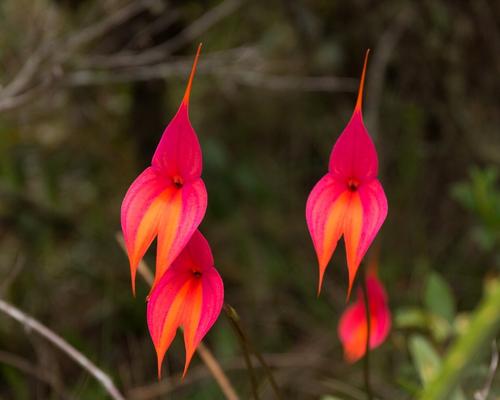 JANUARY
JANUARY
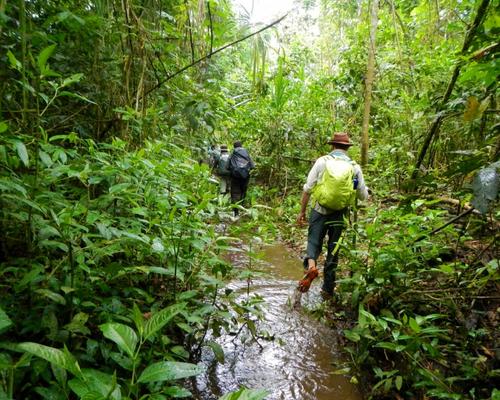 FEBUARY
FEBUARY
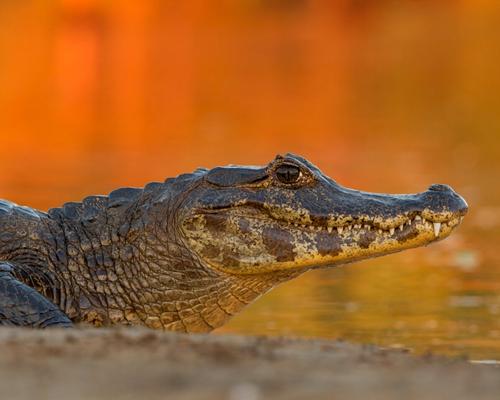 MARCH
MARCH
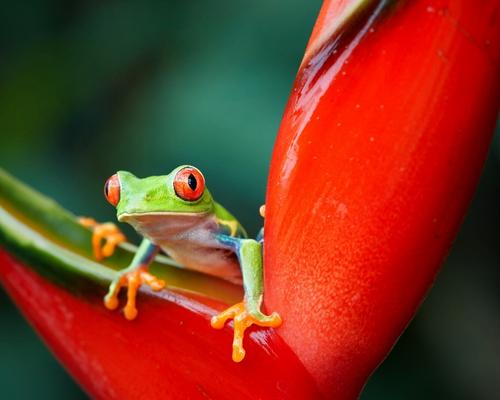 APRIL
APRIL
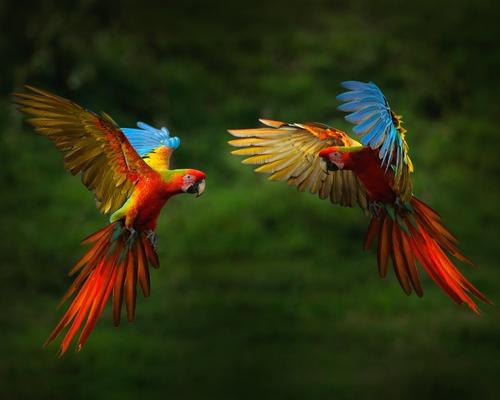 MAY
MAY
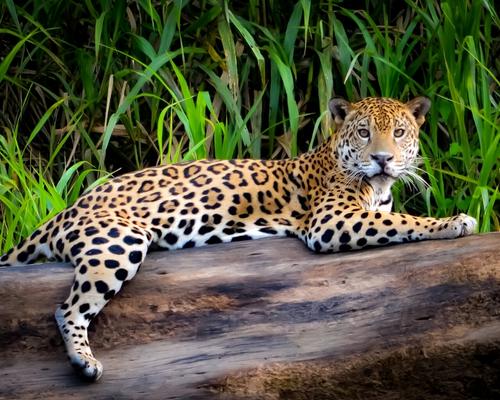 JUNE
JUNE
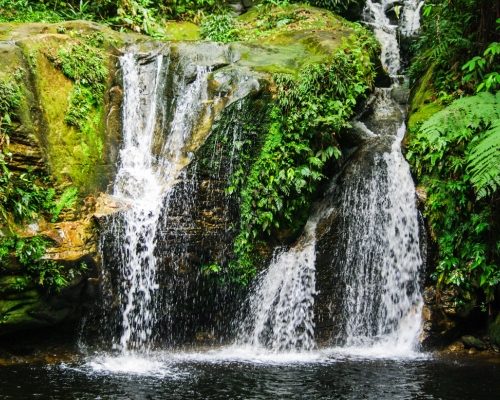 JULY
JULY
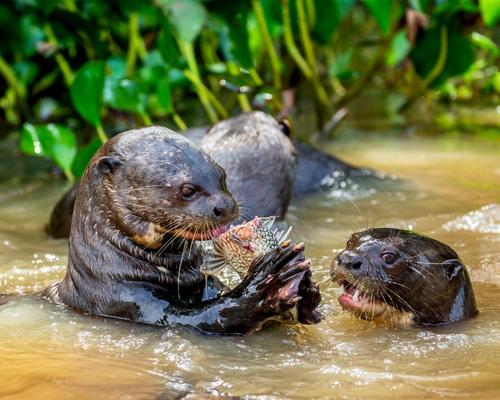 AUGUST
AUGUST
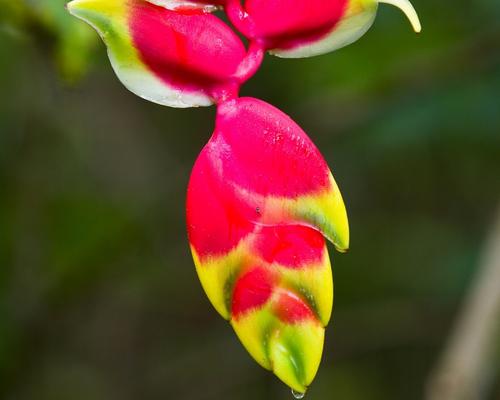 SEPTEMBER
SEPTEMBER
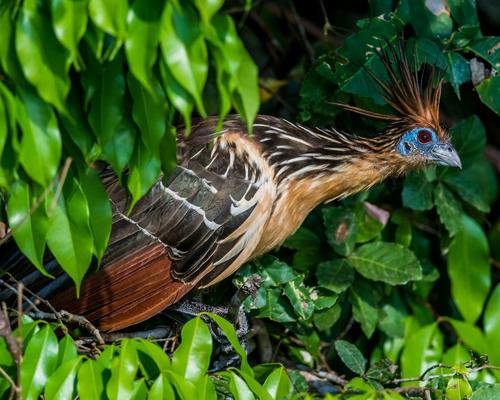 OCTOBER
OCTOBER
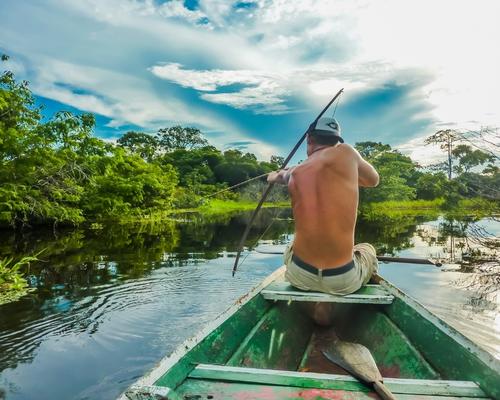 NOVEMBER
NOVEMBER
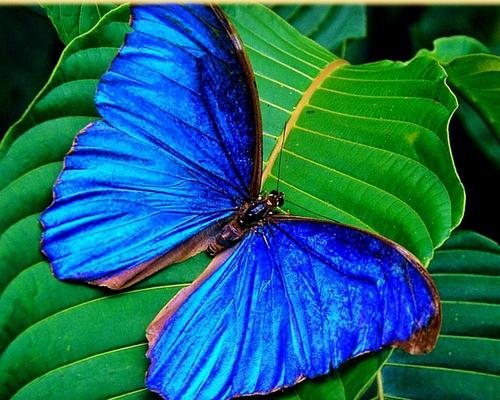 DECEMBER
DECEMBER
To book this tour, a minimum of $ 200 USD per person is required, the remaining balance will be paid upon arrival in Peru, at the Cusco office.
Any other additional information, please coordinate with your travel agent.
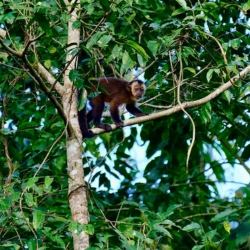
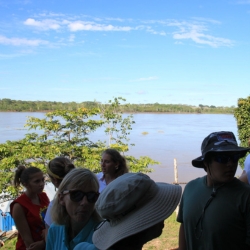
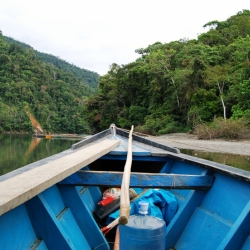
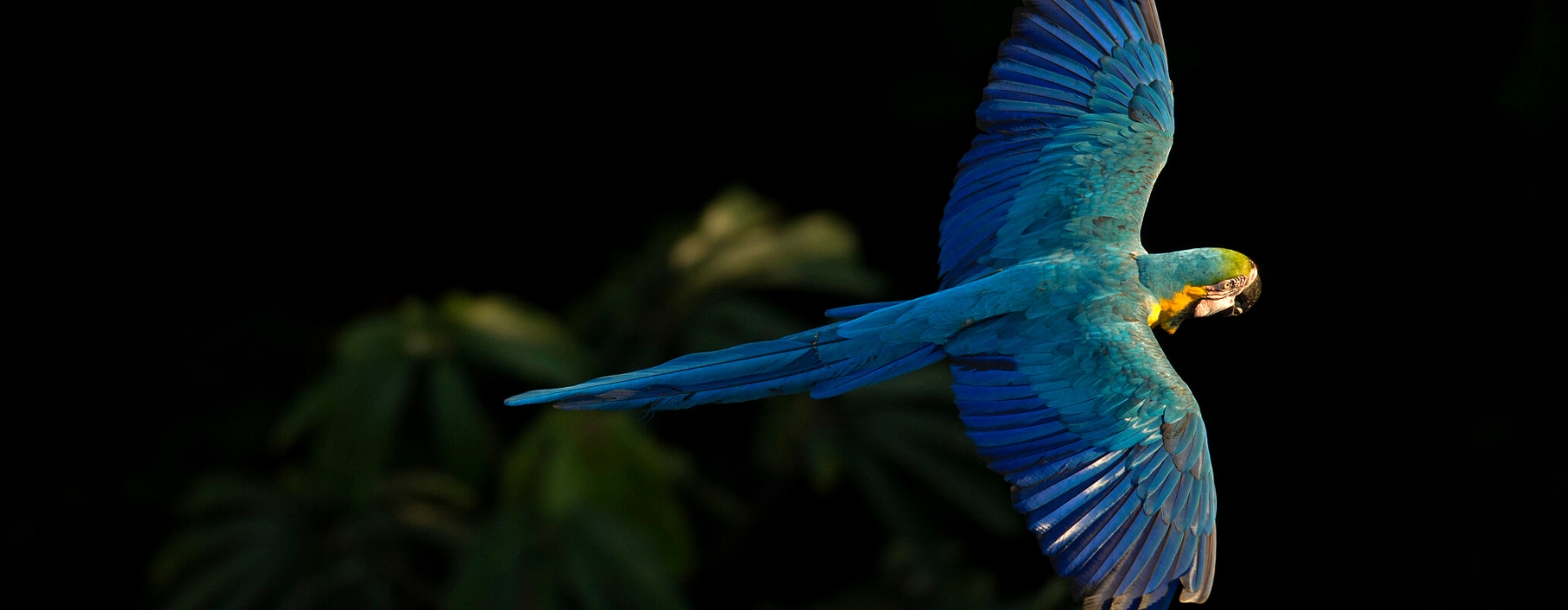
Feel the restorative power of nature, relax your mind in a place full of energy and life, disconnect from the fast-paced frenzy of everyday life.

Vaccines recommended for travelers to the Amazon often include hepatitis A and B, typhoid, and yellow fever. Visit your doctor four to six weeks before your trip for the latest recommendations and requirements for your destination. You may be advised to start taking malaria pills around this time.
The US Center for Disease Control is an excellent resource for detailed information on preventing travel related illnesses.
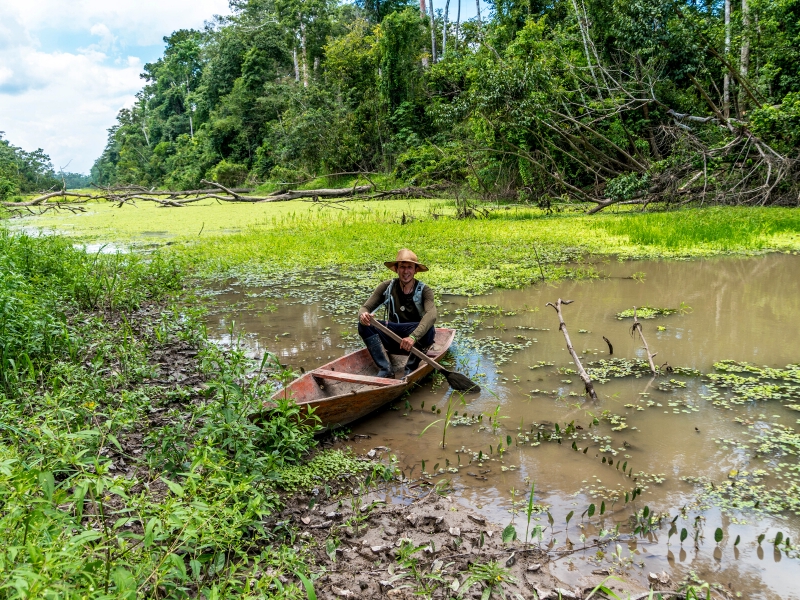
To stay safe in the Amazon, travelers should eat sensibly, dress appropriately and apply repellent to minimize the chance of getting bitten by mosquitos, and take the necessary vaccinations, medication and precautions as recommended by your doctor.
When hiking, canoeing, and enjoying other jungle activities you should always stay with your group and follow your guide’s advice. We also recommend that you leave valuable jewelry, watches and electronics at home, and where possible use a money belt and any room safes at your disposal to store passports and important documents.
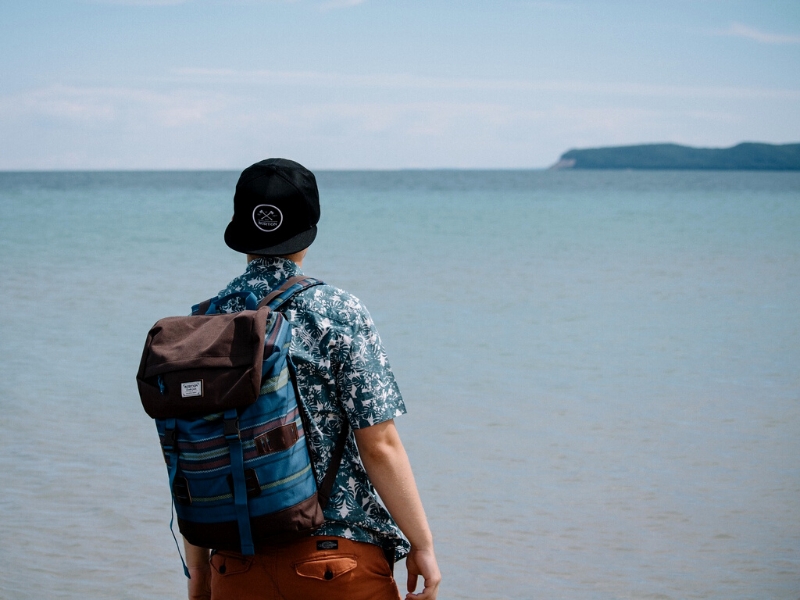
Bring comfortable walking shoes, light-weight long pants, and long-sleeved tops, a wide-brimmed hat, sunscreen, extra socks, mosquito repellent with DEET, bathing suits and of course, waterproof ponchos with hoods to protect against rain your camera, with charger and extra batteries on excursions. Binoculars are very important to enjoy the wildlife. Do not forget to include some items that you can give away to the locals (t-shirts, pens, and paper are especially prized, and perhaps some chocolates or candies for little kids). During meals in the dining room, we ask our guests to wear casual clothing and shoes. We provide rubber boots for wetland excursions and wet landings, and recommend taking comfortable walking shoes.

Travelers are strongly advised to purchase trip cancellation insurance which will reimburse the cost of air tickets and other non-refundable trip payments. International medical, baggage loss, and delay insurance are also recommended. Unfortunately, if you miss the Amazon tour because of a weather-related flight cancellation, we will not reimburse the cost of the reservation since flight cancellations are beyond our control and we have to comply with our schedules.
To enter the countries in the Amazon Rainforest, you will need a valid passport. However, visitors from most countries do not need a visa, provided their visit will be shorter than 90 days. If you plan to stay longer, you will need to request a visa in your home country.
Yes. The food is simply world class. Our guests enjoy a menu of fresh, delicious Peruvian fare (with a bit of continental influence). Breakfast, Lunch, Dinner each day promises to be a culinary feast for the senses, paired with select South American wines or perhaps a freshly pressed juice. If you have special dietary requests, please inform Andean Great Treks at the time of booking, or at least by 30 days prior to start the Amazon Tours, because some items may have to be ordered from local markets in advance. Every effort will be made to cater to special dietary needs and to accommodate special requests, subject to a given products’ availability in Peru.
Amazon wildlife is abundant, but you have to know where to look. Many creatures are weary of humans and often camouflaged. Our expert naturalist guides will help you spot and identify animals with their local knowledge, tracking experience, and remarkable eagle-eyesight and trained ears.
Many can even mimic bird and monkey calls to attract them! In general, the longer you spend in the region and deeper you can travel into the rainforest, the more chance of spotting wildlife you see. A decent set of binoculars will also go a long way to help.
Taking vitamin B12 is a more natural way to gain some resistance to mosquitoes. It can be ingested as vitamin pills or found in some foods with high levels of B12 such as shellfish (clams, oysters, mussels), fish, crustaceans (crabs), soy products (milk, tofu), bran cereals, red meat (lamb, beef), low fat milk, select cheeses, and eggs. We suggest taking B12 supplements around 2-3 weeks before arriving in Amazon Rainforest.
Yes. We warmly welcome families with children aged 7 or older. Our lodges are comfortable to receive families with their children. Additional accommodation for one child is available in some Lodges. Our naturalist guides are very friendly with kids and all of our staff will provide the necessary care for your family. We also have survivor jungle trails, piranha catch-and-release fishing experiences in Iquitos, and meal menus for kids.
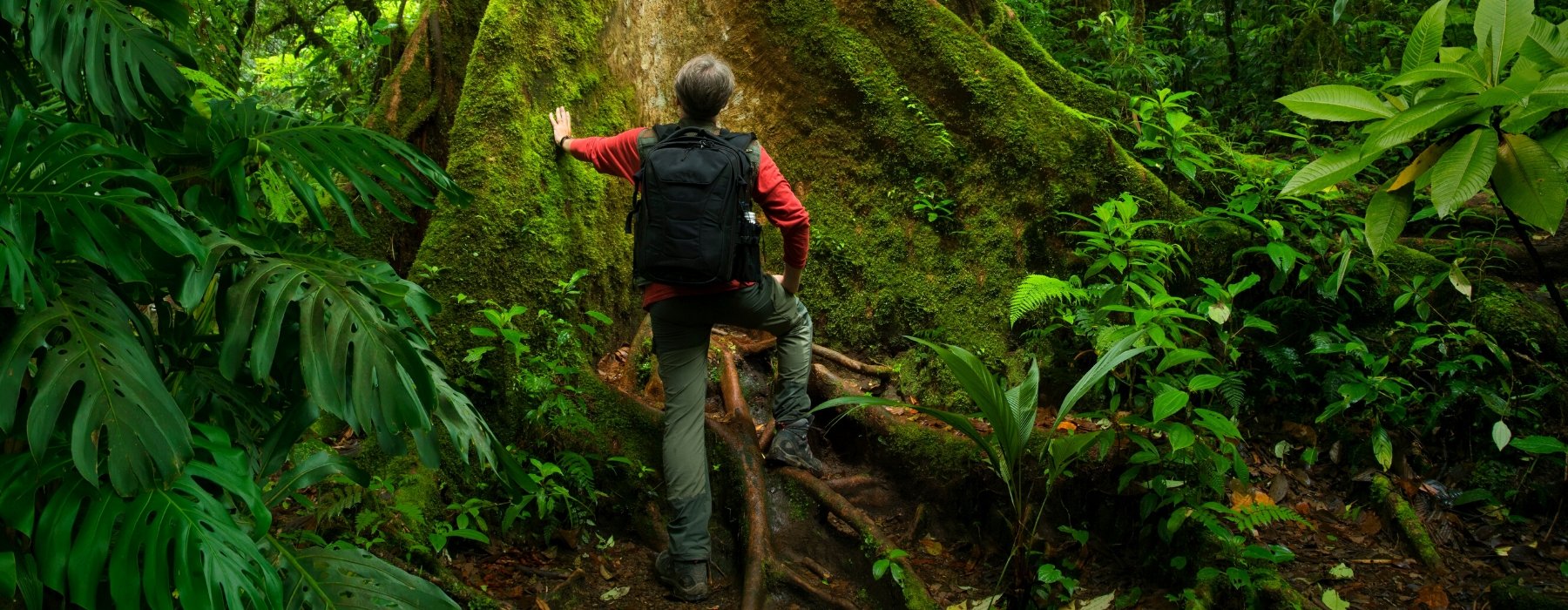
Every Andean Great Treks holiday has been thoughtfully planned and crafted by our specialists. They draw on their own extensive travel experience and the guidance and expertise of our local partners to create superb holidays. Our specialists are committed to making every aspect smooth and enjoyable; they genuinely want to ensure that the holidays they create leave you with wonderful lasting memories.
Every Andean Great Treks traveller is accompanied by an experienced tour guide, you will be immersed in Historic cities, ancient ruins and unfamiliar landscapes are all brought to life by our carefully selected local guides. They want to share their expertise and help you make your own discoveries too; their sole mission is to ensure you enjoy every moment.
Giving you the freedom to make your holiday even more memorable. We know how much our customers look forward to their holiday and we pride ourselves on the choice and flexibility that we offer to enhance every aspect of your experience. Whether it’s getting to the airport, upgrading your room or booking an additional excursion, we can help.
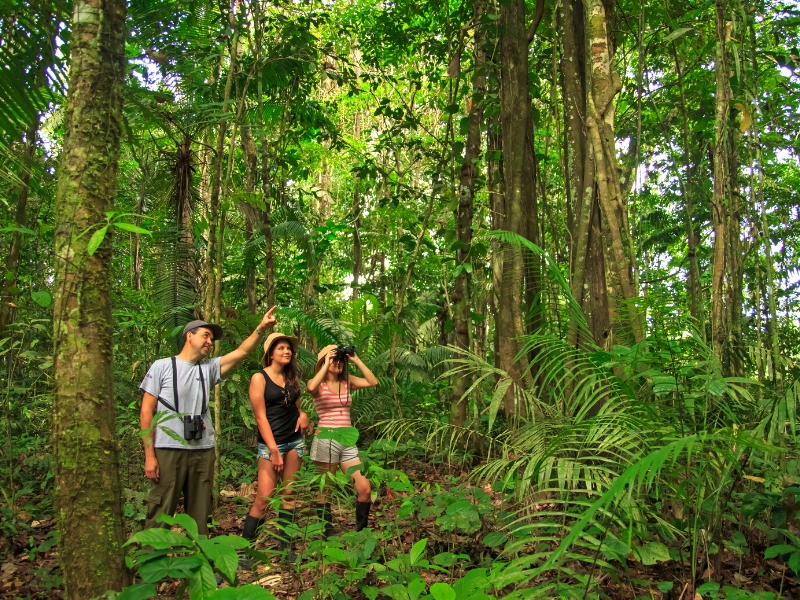
Our guides are the stars of the show; it is their unrivalled knowledge, passion and expertise that will transform your tour experience from good to truly extraordinary!
Because the have grown up in the area and know it like the back of their hand, so they can help you experience whichever aspects most interest you. They’re passionate about sharing their corner of the world with you, and as you explore together, they’ll open your eyes to the intricate details, provide background to enhance your understanding of what you’re seeing, and share stories that will bring everything to life.
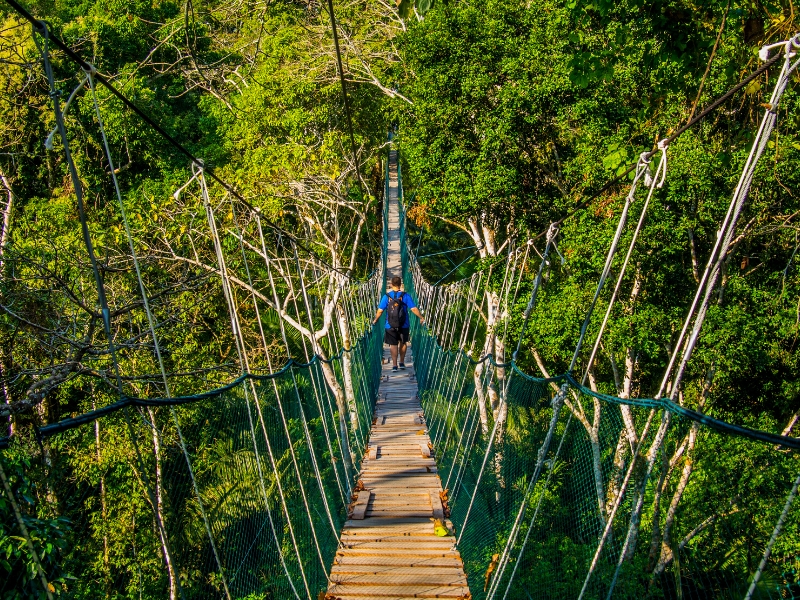
“Your inspiration for a trip can be a single word or a highly evolved outline, but it’s the conversations we have that help us understand the experience you’re looking for. Meanwhile, I’m looking back on the time I spent at the destination.
‘The great thing about working with a specialist at Andean Great Treks is how they take your complete jumble of ideas and turn them into something absolutely spectacular.’
As you begin to share your ideas with your specialist, it will connect them immediately back to a time in their own travels. Conjuring a picture of the rest time they made that same discovery, reminding them how it felt.
Your specialist understands that, when the journey is right, it has the power to excite your emotions in the most profound ways after all, that was the effect on them.
They carry a treasure box of moments, captured over many journeys, into every suggestion they’ll share with you, as they ask you how you want to feel on your trip.
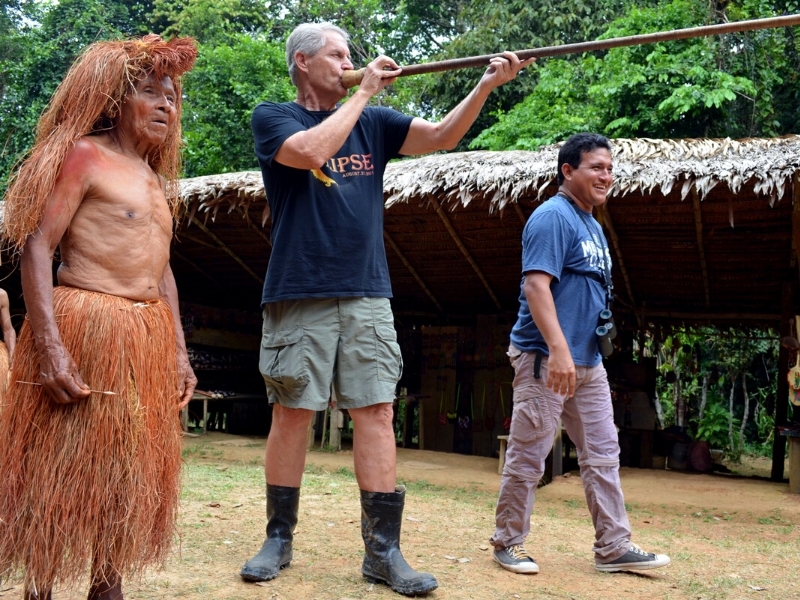
EXPERIENCES THAT CALL TO YOU
It’s what you do in a destination that helps bring it to life. It’s why we strive to choose experiences that help you connect to a place, absorbing a little of its complex character. Wherever your passions lie, we’ll recommend experiences that speak to you, and we’ll recommend the guide or local expert who’s most qualified to help you explore. Packing your holiday full of special experiences means some early starts and long days, but you can be sure that you’ll return home with many incredible memories! Read our Tours and check the Physical Ratings to see if the pace and activity levels are right for you.

STAYS WITH DIFFERENCE
We know that where you stay is a cherished part of your travels. So, we go to great lengths to find places to stay that exceed expectations, or go above and beyond the ordinary, whether in their character, hospitality, or location. Over the years, we’ve discovered the very best properties, trying and testing them, so we can choose the right one for you. We’ve nourished long-standing relationships with these establishments and the people who founded them, and we’ve stayed there many times often, we’ll even know which rooms have the best views (and reserve them for you).
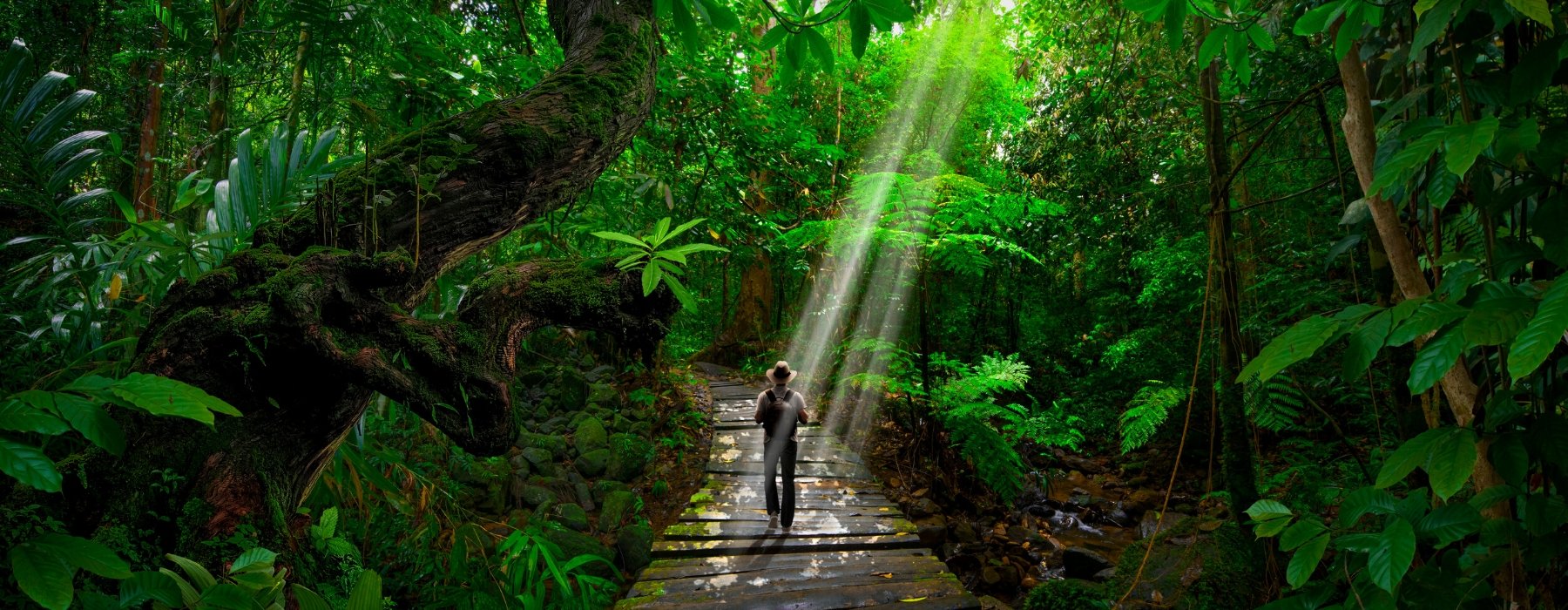
Our style of travel — authentic, thoughtful, and focused on building meaningful connections to the people and places you visit — is inherently respectful and considerate of the destinations we love. We design each aspect of your trip exactly as you want it, which includes its sustainability. That might mean choosing a train journey instead of a flight, staying at eco-friendly wildlife lodges, or opting for experiences that give back to the communities you’re visiting. The choice is yours.
Responsible travel has always been at the heart of what we do. First and foremost, because it gives you the best experience, but, also because it helps to preserve the communities and landscapes you visit. This isn’t new for us we collaborated with local communities and outside experts so we can grow to be better ambassadors.
The most authentic and interesting experiences often directly benefit the local people. We prefer to buy local products that are produced in the organic farms, we also have alliances with local artisan organizations who provide us with souvenir items for our clients, your money directly benefits the local economy.
Our style of travel — authentic, thoughtful, and focused on building meaningful connections to the people and places you visit — is inherently respectful and considerate of the destinations we love. We design each aspect of your trip exactly as you want it, which includes its sustainability. That might mean choosing a train journey instead of a flight, staying at eco-friendly wildlife lodges, or opting for experiences that give back to the communities you’re visiting. The choice is yours.
Responsible travel has always been at the heart of what we do. First and foremost, because it gives you the best experience, but, also because it helps to preserve the communities and landscapes you visit. This isn’t new for us we collaborated with local communities and outside experts so we can grow to be better ambassadors.
The most authentic and interesting experiences often directly benefit the local people. We prefer to buy local products that are produced in the organic farms, we also have alliances with local artisan organizations who provide us with souvenir items for our clients, your money directly benefits the local economy.
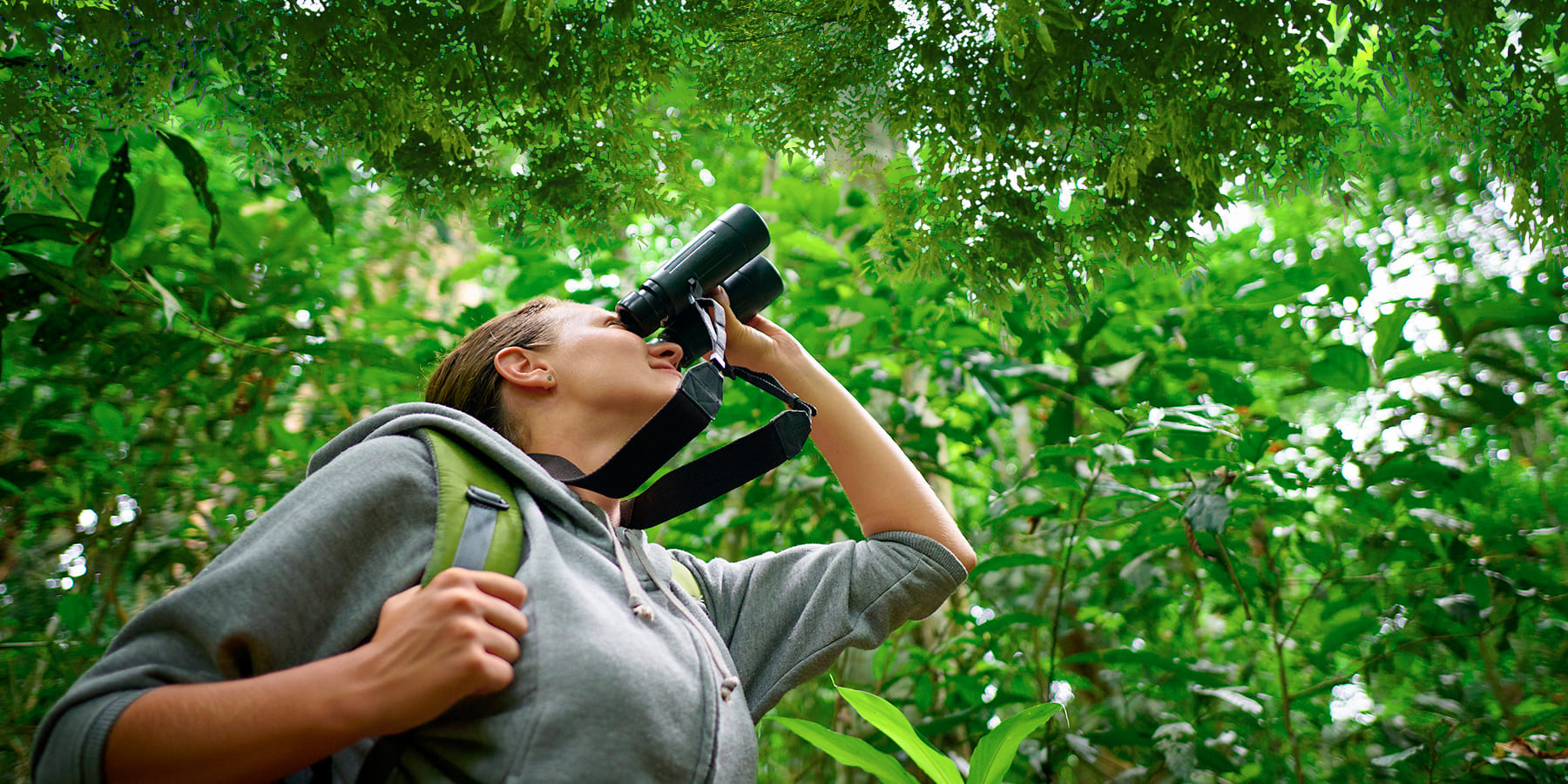
‘There’s a saying: we don’t inherit the Earth from our ancestors, we borrow it from our children. When we show you our country, this philosophy guides everything we do. It’s our responsibility to preserve the environment and wildlife, and support communities. That means using slower modes of transport, like cycling, employing local people, and working with communities who’ll benefit directly from your visit. This also gives you the best, most authentic impression of the places we want to share with you.
We prefer to buy local products in ecological bags, to avoid the use of plastic bags, likewise we teach the use of soaps and ecological products in each tour that we organize. We also work on reforestation projects with local communities who take care of landscape resources such as communal reserves, national parks.
‘There’s a saying: we don’t inherit the Earth from our ancestors, we borrow it from our children. When we show you our country, this philosophy guides everything we do. It’s our responsibility to preserve the environment and wildlife, and support communities. That means using slower modes of transport, like cycling, employing local people, and working with communities who’ll benefit directly from your visit. This also gives you the best, most authentic impression of the places we want to share with you.
We prefer to buy local products in ecological bags, to avoid the use of plastic bags, likewise we teach the use of soaps and ecological products in each tour that we organize. We also work on reforestation projects with local communities who take care of landscape resources such as communal reserves, national parks.
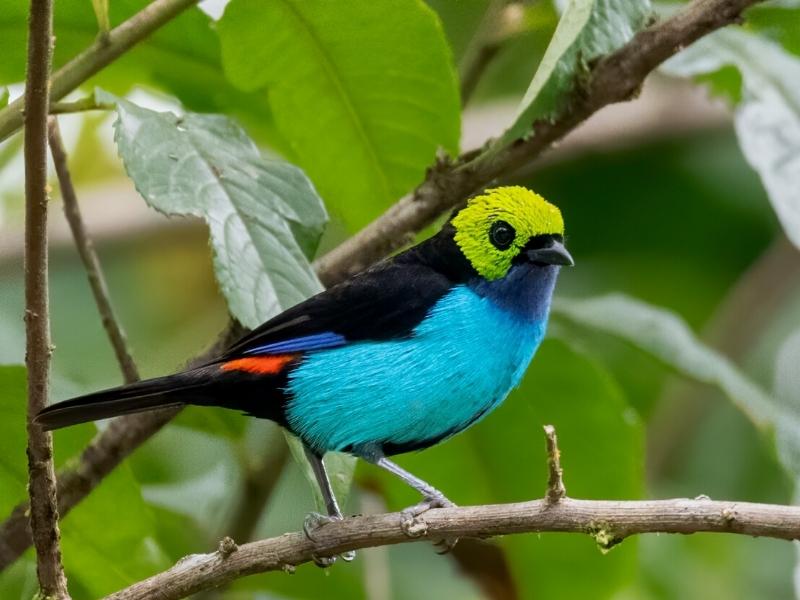
Manu National Park is located in the Amazon rainforest of Peru. This attraction is one of the few places on the planet that still maintains its great biodiversity of birds, mammals, reptiles and many medicinal plants.

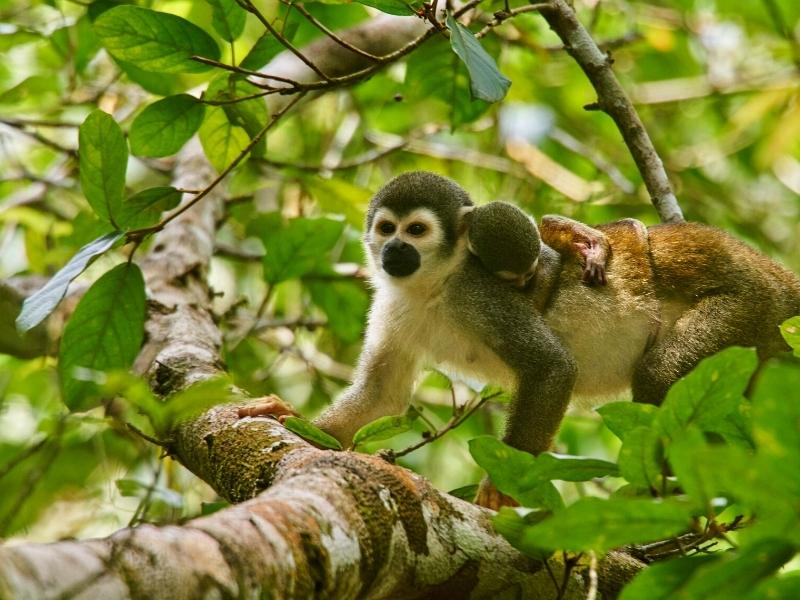
This trip allows you to have one of the best experiences in the Manu National Park which includes the Reserved Zone in only 7 days. It is an ideal way to experience the culture and traditions of local communities and see the distinct species of animals and birds that inhabit here.

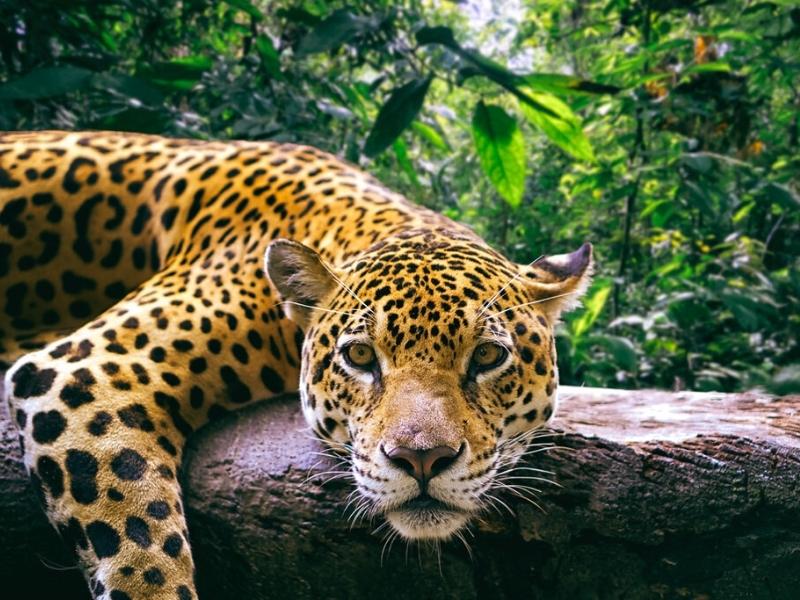
The Manu Jungle tour goes to one of the largest life biosphere reserves in the World. You will enjoy wildlife, traditional villages, with the best specialized guides.
